Warm brick underfoot, the gentle crunch of mortar between courses, and the welcoming promise of a seat in the shade — all these details turn a simple entry into a story-book greeting. Brick porches have guarded homes from weather for centuries, yet their design potential still feels limitless. Patterns, colors, and clever pairings with wood or metal can recast the humble clay unit into anything from cottage charm to sleek urban minimalism. If you’re dreaming of a facelift that adds both heft and heart, explore the brick porch ideas below and discover the style that speaks to you.
1. Brick Porch with Classic Herringbone Floor Pattern
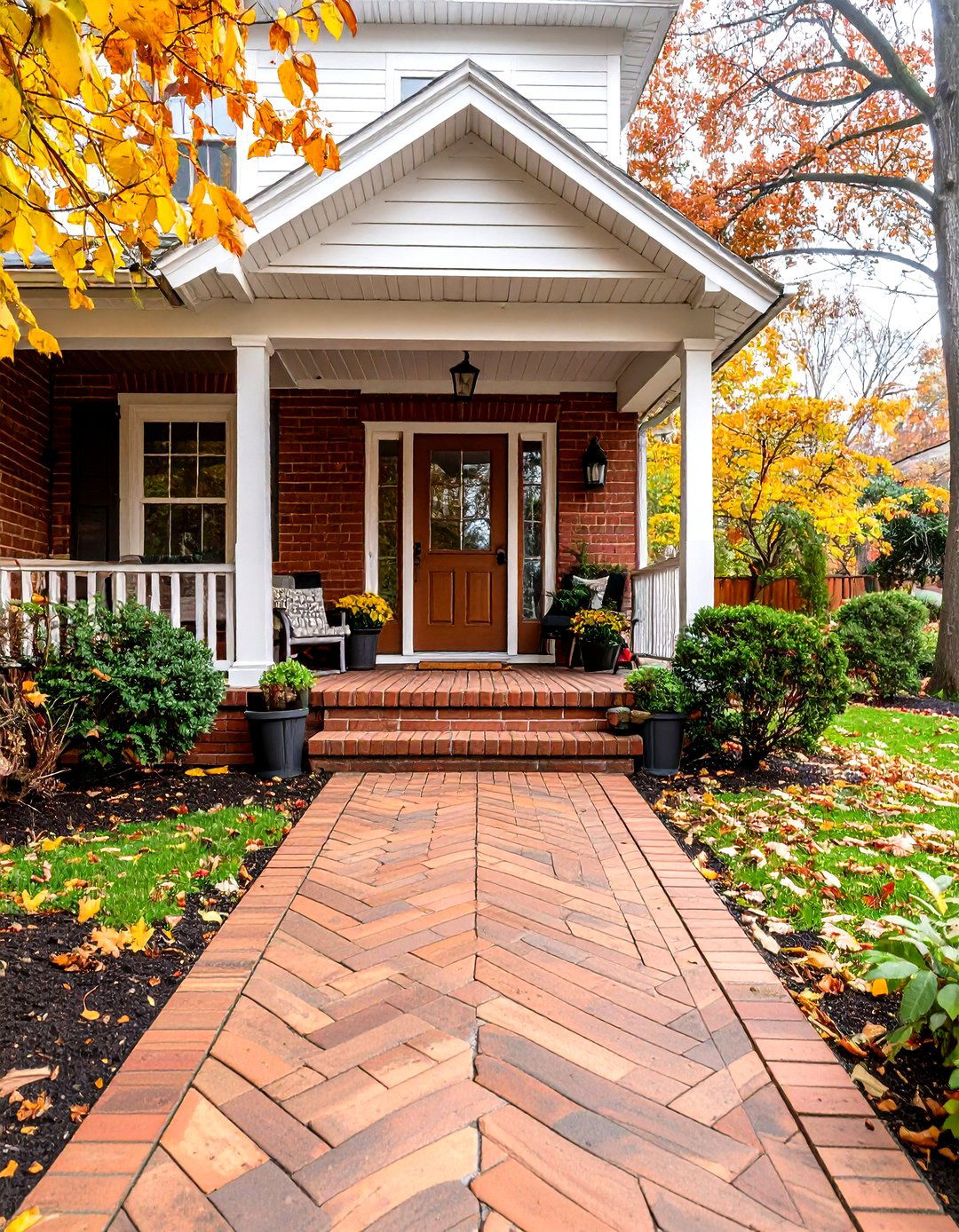
A time-honored herringbone layout instantly gives a brick porch movement and grace, leading the eye toward the front door like a well-composed path. By staggering bricks at 45 degrees, the joints interlock tightly, making the surface stronger against settling or frost heave. Choose a slightly contrasting mortar to emphasize the zig-zag rhythm, or match the joint color for a subtler weave. Contractors love herringbone because full bricks fit without complex cuts, keeping labor in check. Even a narrow stoop feels grand when this pattern turns the landing into a decorative rug under open skies.
2. Brick Porch Accent Wall to Boost Curb Appeal
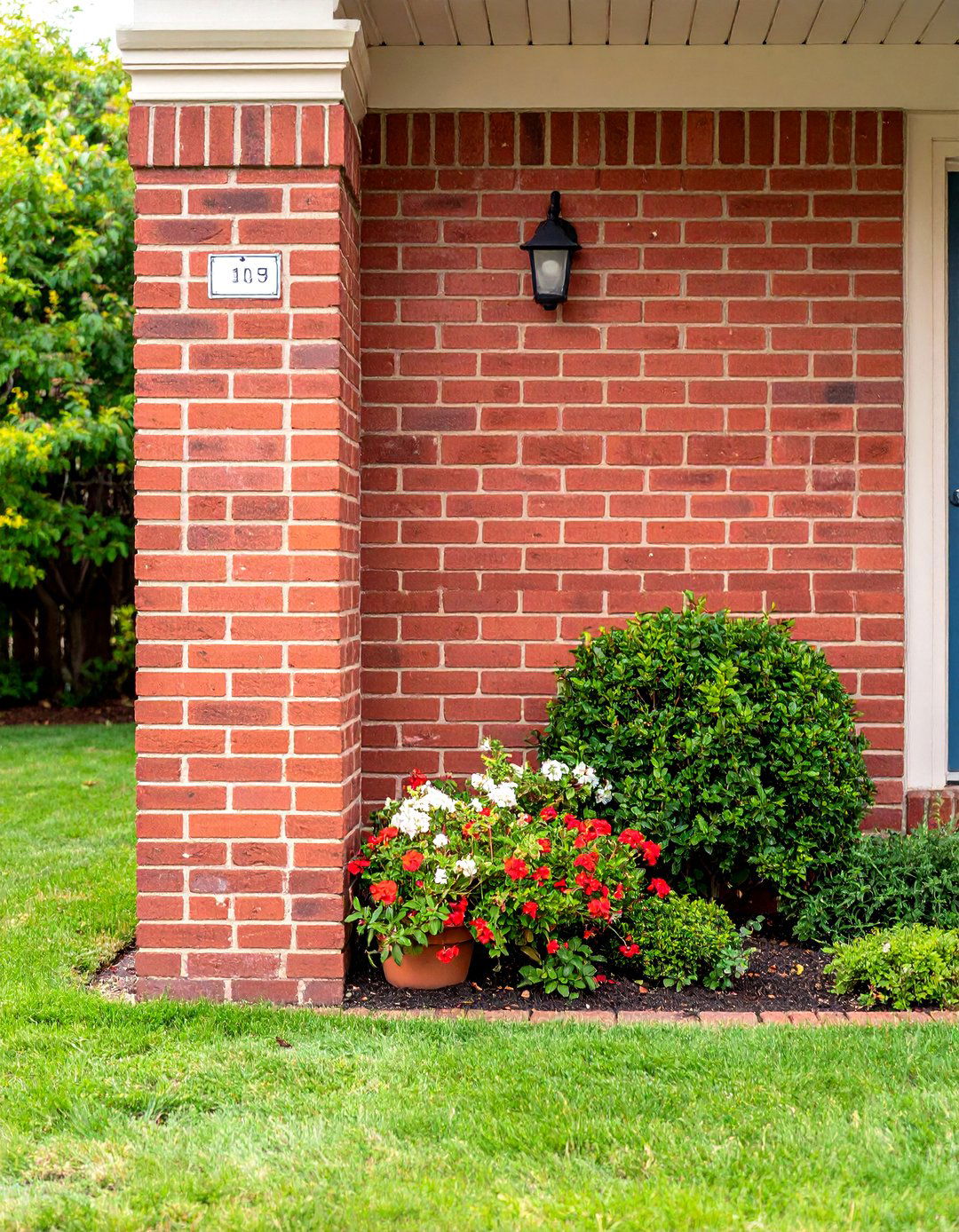
Unlike painted siding that chips every season, a vertical brick porch accent wall introduces lasting texture and an unmistakable focal point. By continuing the same brick used on the floor up one side, you visually anchor the entry and protect vulnerable drywall from rain splash. Homeowners often inset a house-number plaque or small sconce here so the brick acts like a frame. If budget allows, choose a soldier-course border to cap the wall’s top edge for a finished, architectural feel. The upgrade requires little square footage yet instantly elevates first impressions.
3. Mixed-Tone Brick Porch for Depth and Character
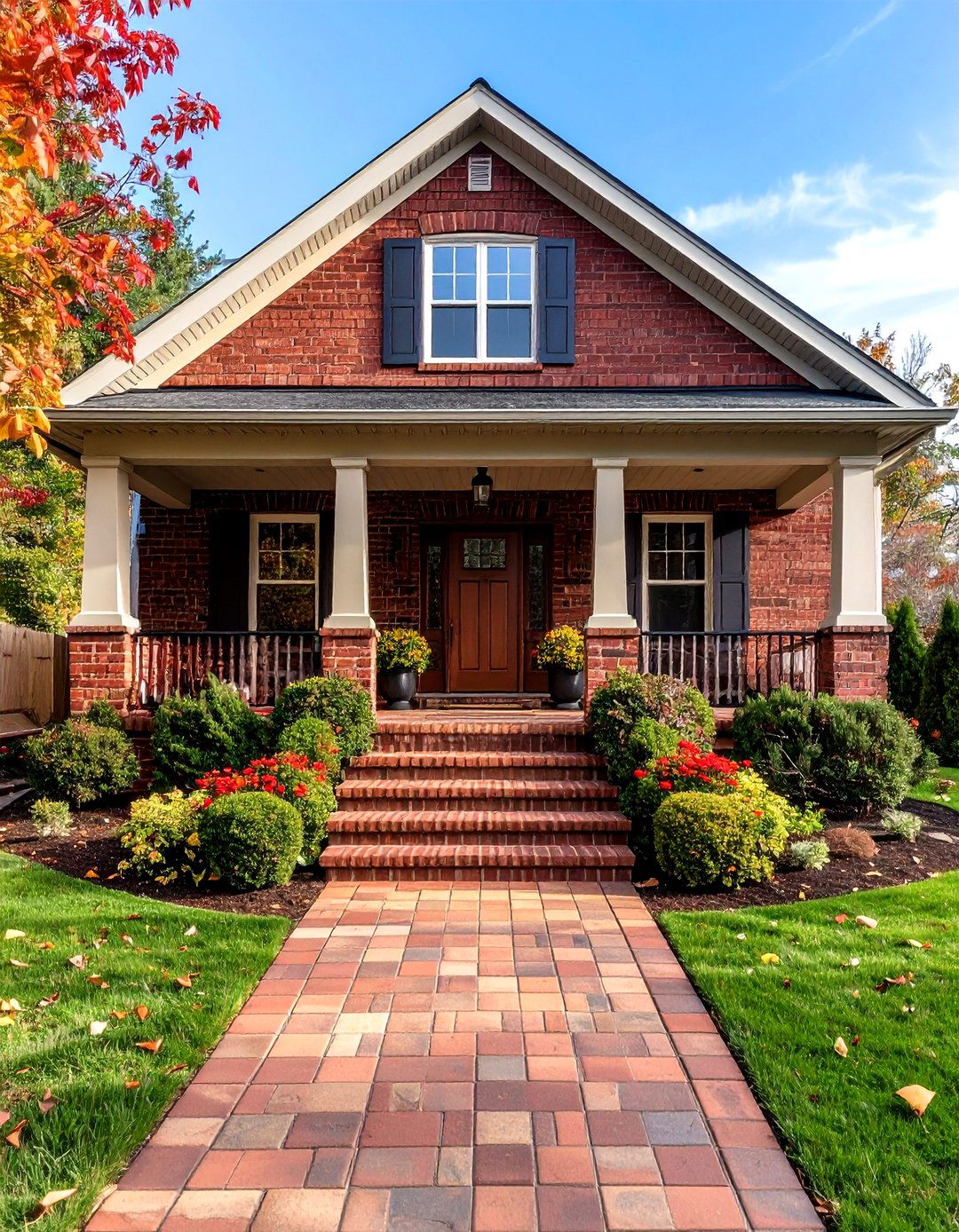
Certainly, blending two or three compatible brick colors across a porch floor creates a subtle mosaic that hides dirt and celebrates handmade variation. Think warm red mixed with hints of charcoal or buff; the difference need not be loud to add depth. Masons usually randomize the blend on site, but you can pre-lay a sample square to confirm balance. Use one of the darker bricks for step risers to tie the scheme together. Mixed tones work especially well with neutral siding, ensuring the brick porch steals the spotlight without clashing with surrounding trim.
4. Brick Porch and Timber Beam Pairing for Rustic Warmth

Looking for mountain-lodge charm without swapping your entire façade? Pair chunky cedar or reclaimed-oak beams with a brick porch floor and watch the entry glow. Wood’s organic grain plays off brick’s crisp lines, creating warmth under even a simple gable. Protect posts with concealed metal shoes so moisture from the porch cannot wick upward. A coat of clear marine varnish keeps the timber rich while allowing the brick’s earthy palette to remain the star. This pairing feels especially inviting when you add a log swing or lantern-style pendant overhead too.
5. Brick Porch Arched Openings for Southern Grace
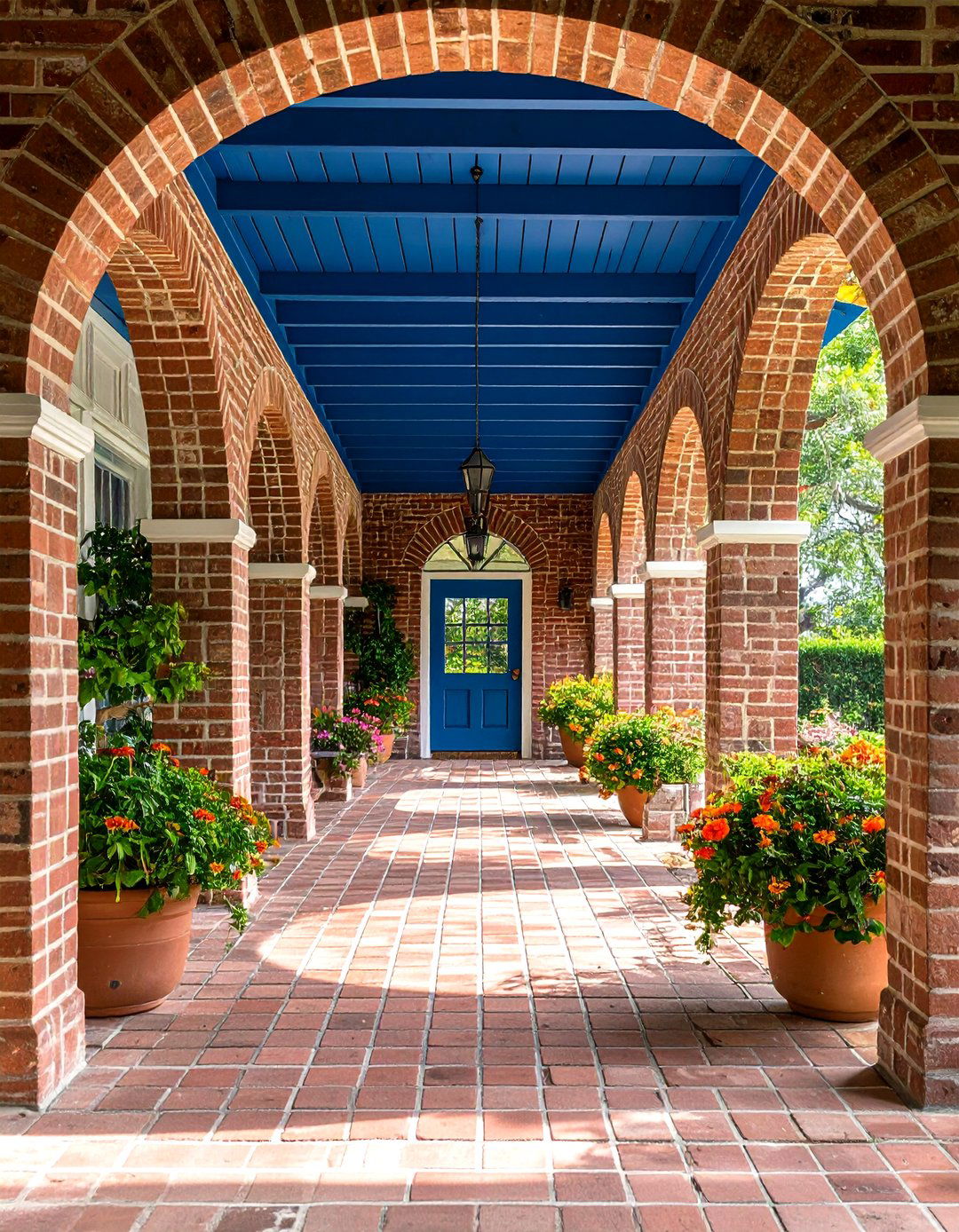
An arched opening softens the geometry of brick and instantly echoes historic southern verandas. By cutting a gentle curve in the lintel courses, you create shade lines that move across the porch through the day. Masons often form the arch with precast concrete or steel lintels hidden behind the bricks, preserving structural integrity. Paint the ceiling haint blue if you like tradition; the whisper of color makes the brick porch feel taller and cooler. Even without ornate columns, arches lend timeless grace and set an upscale tone for the rest of the façade.
6. Brick Porch with Built-In Planter Boxes
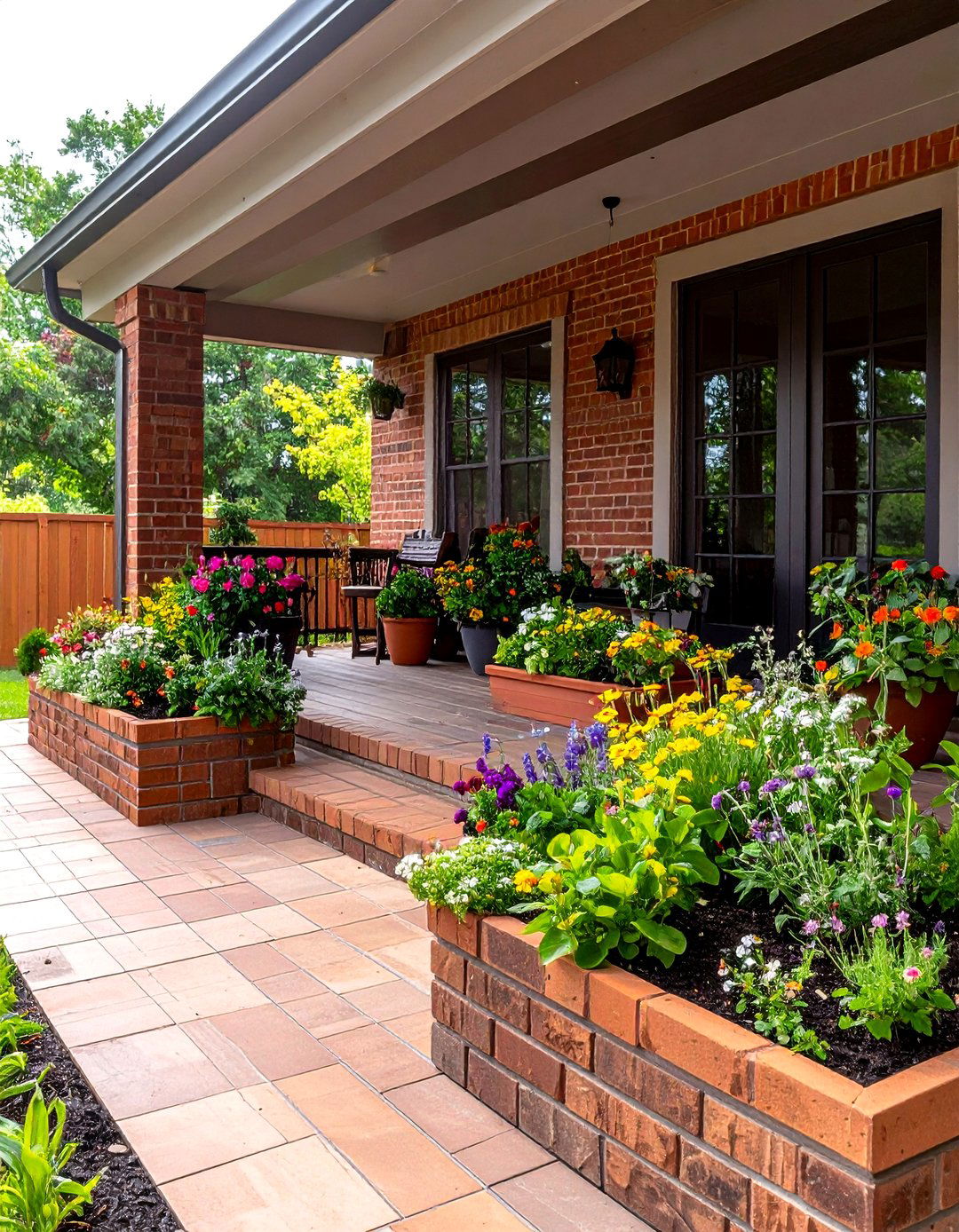
For homeowners who crave greenery but dislike cluttered pots, brick porch planter boxes built into the perimeter offer a tidy solution. The mason simply raises a short parapet along one or both sides, leaving the interior hollow for soil. Because the planters share the porch foundation, they resist tipping and withstand freeze-thaw cycles better than ceramic containers. Line the inside with waterproof membrane and gravel before adding soil so moisture stays away from the wall core. Seasonal herbs, dwarf evergreens, or cascading flowers turn the structural element into living décor.
7. Screened Brick Porch for Bug-Free Evenings
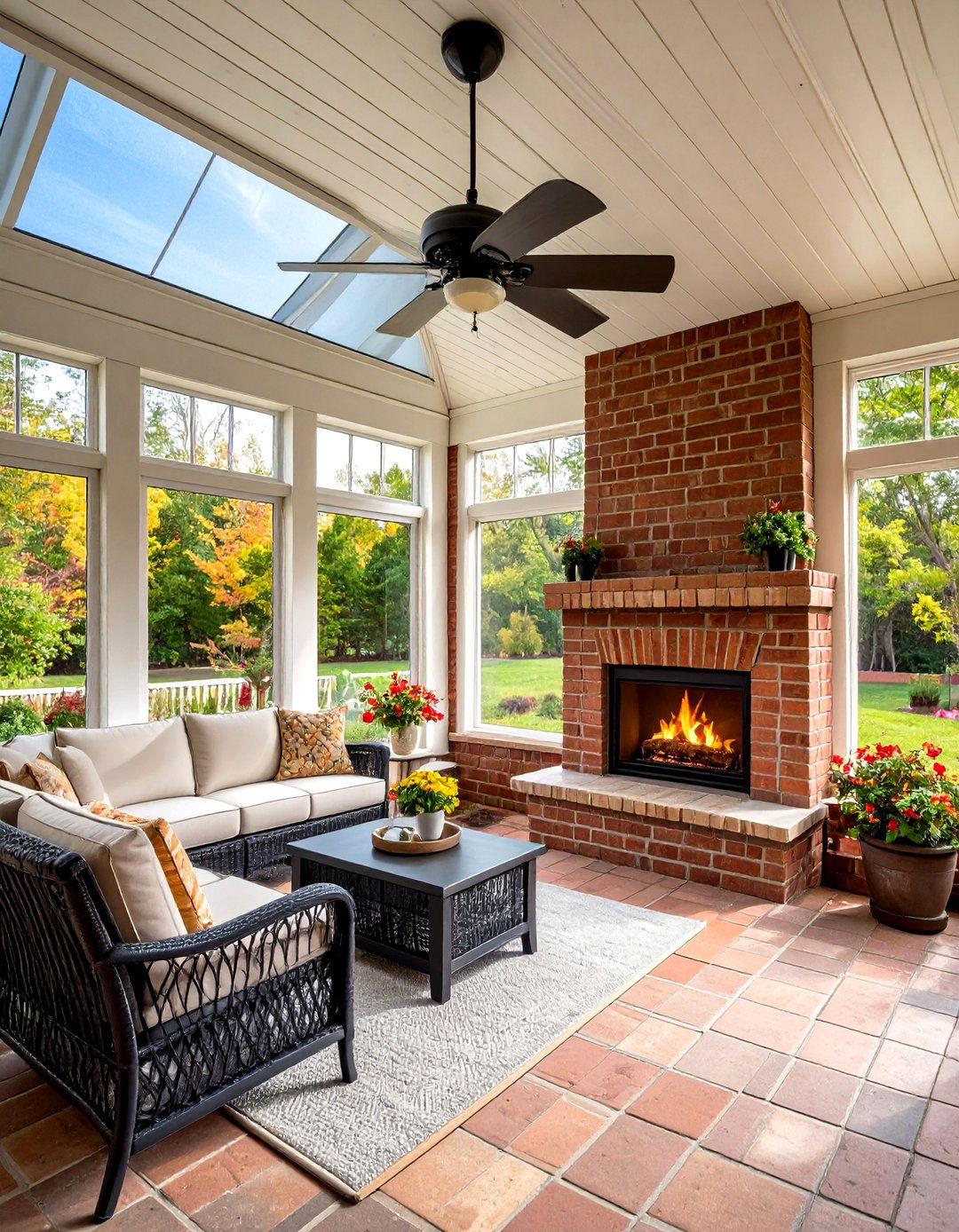
To extend porch season in mosquito-prone areas, enclosing a brick porch with fine mesh screens yields an airy room that never needs insect spray. Attach pressure-treated framing to the existing slab, then run the screen from skirting to ceiling for uninterrupted views. Because brick is non-combustible, you can safely add an electric fireplace or candle wall without fear of melted siding. Install a low-profile ceiling fan to keep airflow steady and help the screens dry after rain. The result feels like a breezy outdoor living room that stays comfortable well past dusk.
8. Brick Porch with Contrasting White Mortar Joints
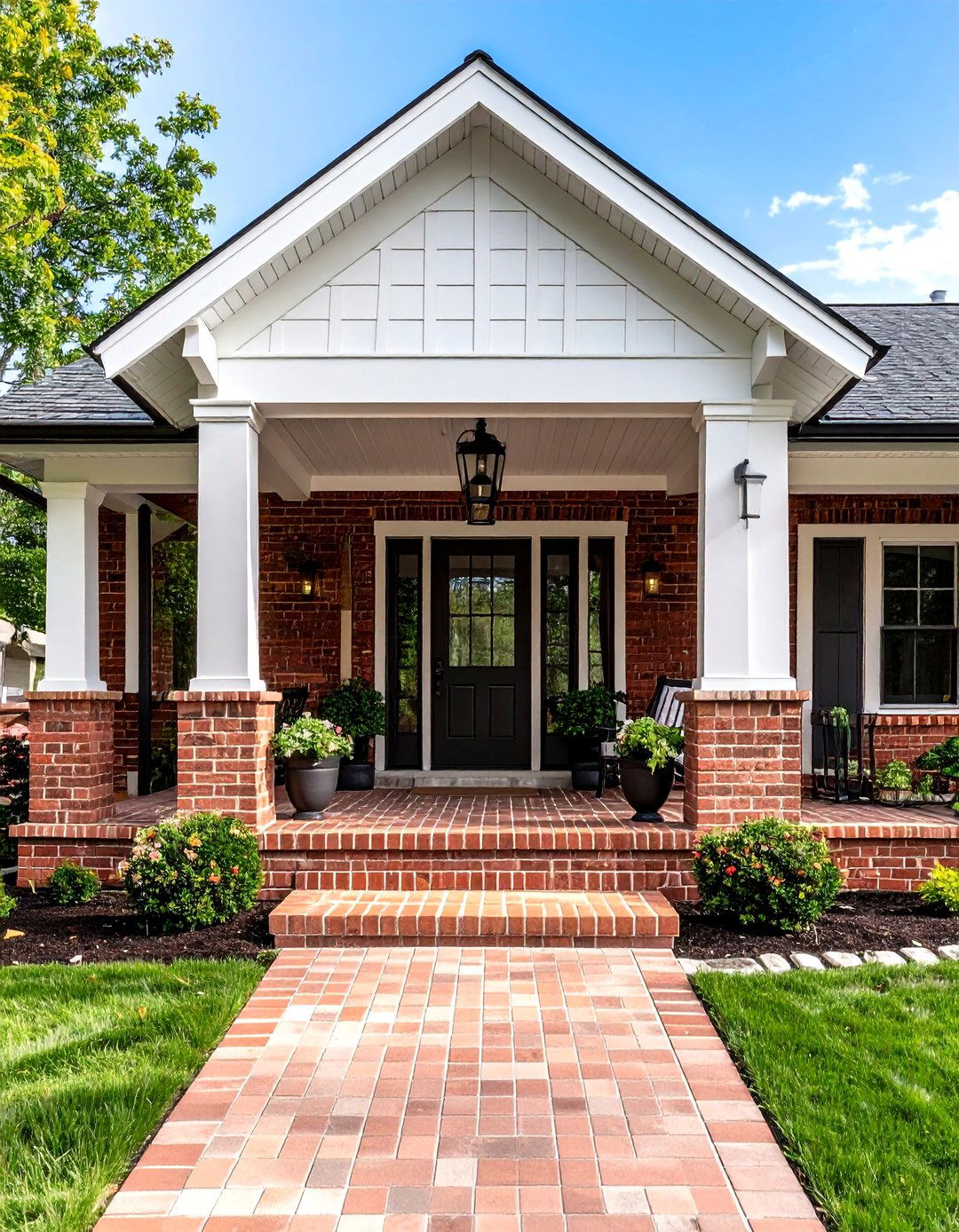
Surprisingly, altering mortar color transforms brick as much as paint transforms drywall, and white mortar joints deliver crisp contrast that highlights every course. Masons achieve the look with lime-rich light grout or even German smear for a distressed twist. On a small brick porch, the brighter lines bounce sunlight, making steps safer and the space appear larger. Pair the treatment with matte-black hardware for a modern farmhouse vibe. Because mortar takes stain differently than brick, the effect stays vivid for decades without the peeling risk of an after-market coating option.
9. Basketweave Landing on a Brick Porch
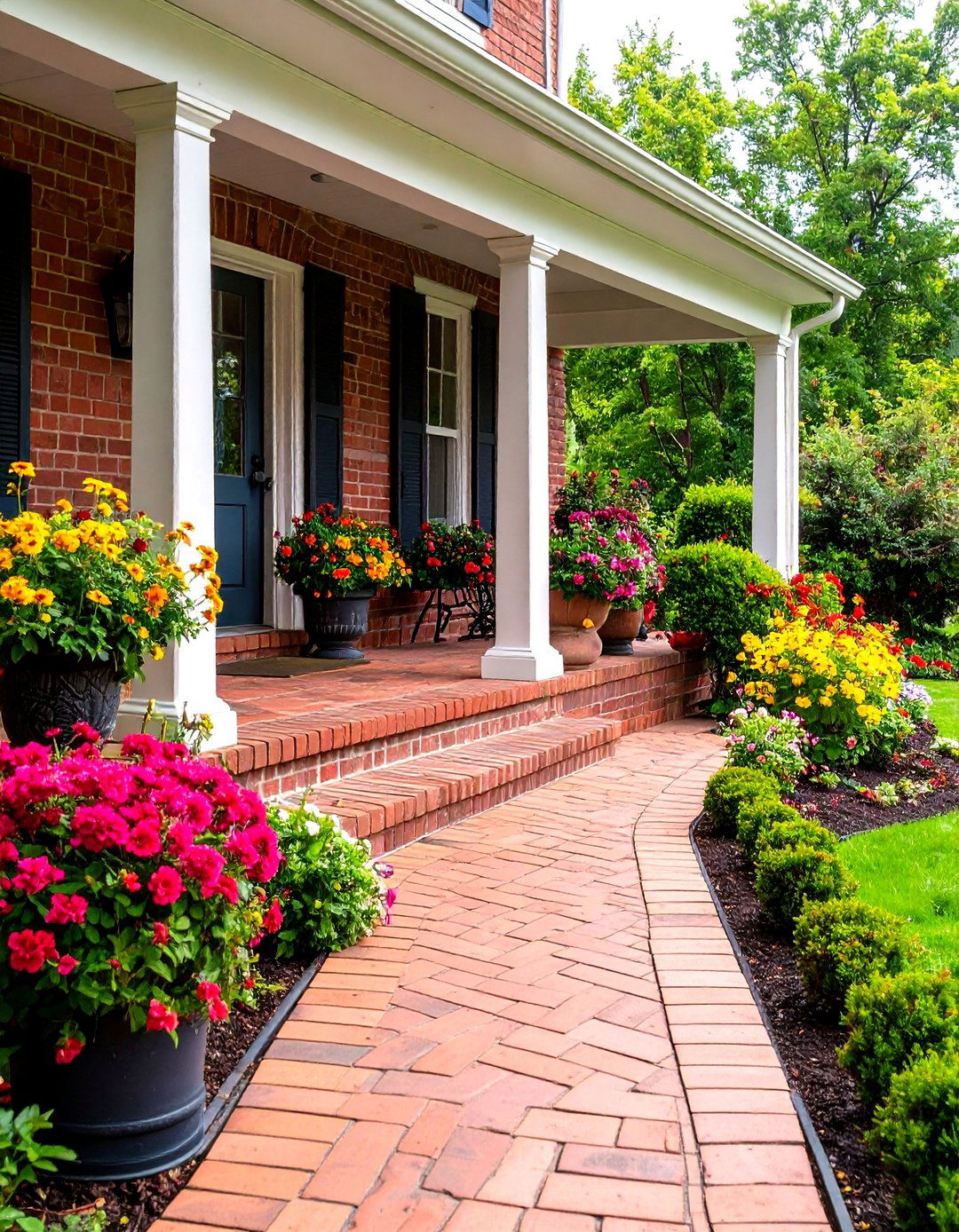
One way to break up a long stretch of running bond is a basketweave landing that functions like a welcome mat. By pairing two bricks laid side-by-side, then flipping orientation in the next pair, you create tidy squares that read as plaid from a distance. The pattern uses full bricks, so waste stays low and repairs are easy. A darker border row keeps the weave contained and prevents visual noise. Homeowners often center the basketweave at the top step, where guests pause, giving the brick porch an artful focal point.
10. Layered Outdoor Rug on a Brick Porch

Take comfort up a notch by adding a weather-rated outdoor rug over your sturdy brick porch floor. The soft textile warms bare feet on chilly mornings and lets you introduce seasonal patterns without permanent commitment. Choose polypropylene or recycled-plastic fibers — they dry fast and resist fading against the clay backdrop. Because brick drains well, minor splashes evaporate before mold forms beneath. Try layering a smaller patterned mat over a solid neutral for designer flair. When colors fade after a few years, simply swap the rug while the brick porch itself remains timeless.
11. Reclaimed Antique Brick Porch for Storybook Charm
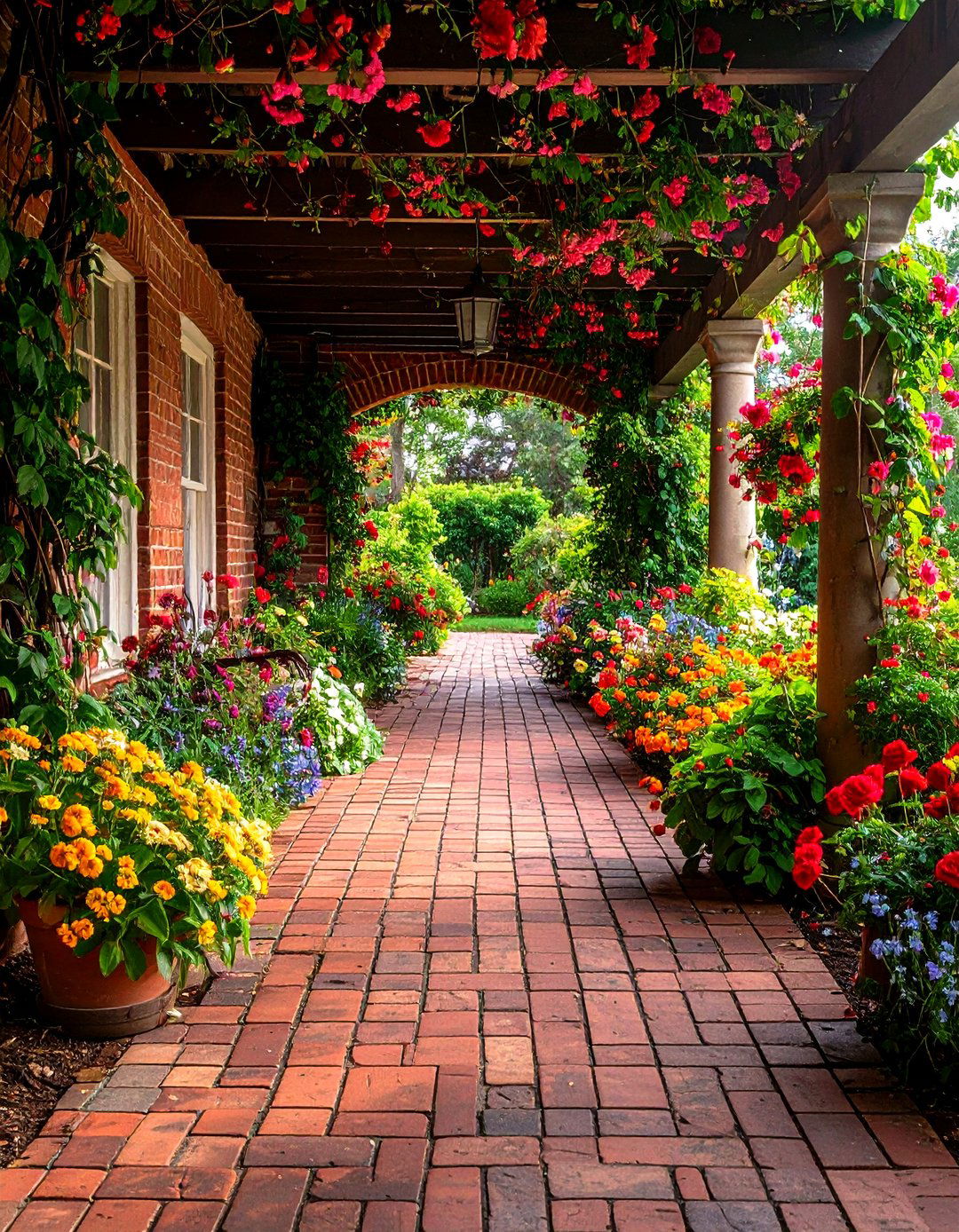
Despite requiring extra sourcing work, a reclaimed antique brick porch rewards you with aged patina no new kiln can replicate. Salvaged street pavers often measure slightly larger and show rounded edges from decades of wear, instantly conveying history. Ask suppliers to verify they are frost-rated to avoid crumbling in cold climates. Because color varies more than modern stock, dry-lay several rows before mortaring to spread shades evenly. Finish the surface with a breathable siloxane sealant so old bricks resist stains while keeping their dusty blush. Guests will swear your home has stood for generations.
12. Thin-Brick Veneer Porch Over Existing Concrete
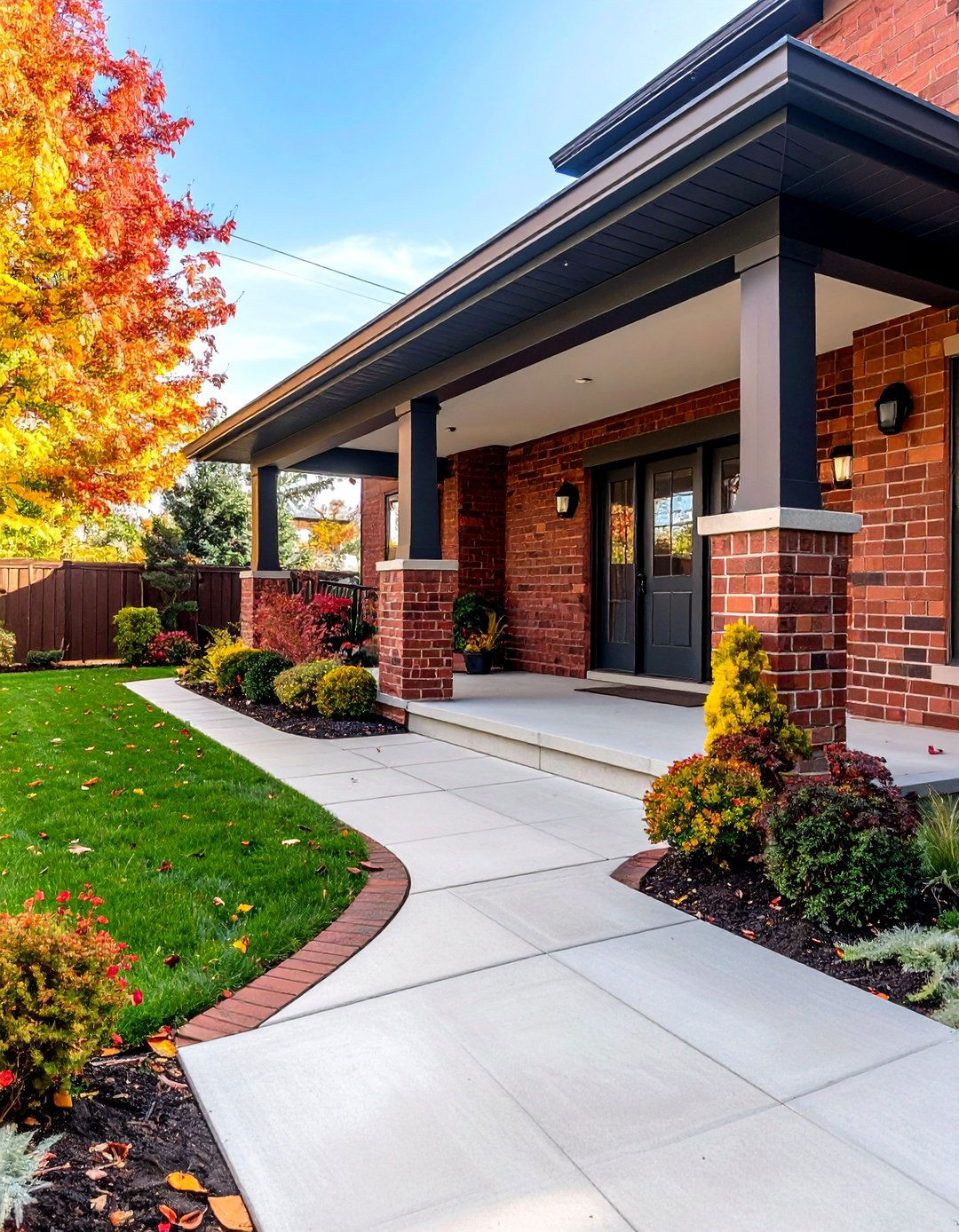
From renovation budgets to town-home boards, many projects forbid demolishing the current concrete stoop; thin-brick veneer offers a clever compromise. At only about half an inch thick, the slices glue directly to a cleaned, scarified slab and finish with grout lines that fool most eyes. Because you avoid full-depth excavation, labor costs drop and door thresholds stay intact. Select corners pre-cut at 90 degrees so step faces appear solid rather than layered. Once sealed, the thin-brick porch stands up to foot traffic and weather, giving you authentic clay character without structural upheaval.
13. Wrap-Around Brick Porch for Extra Seating
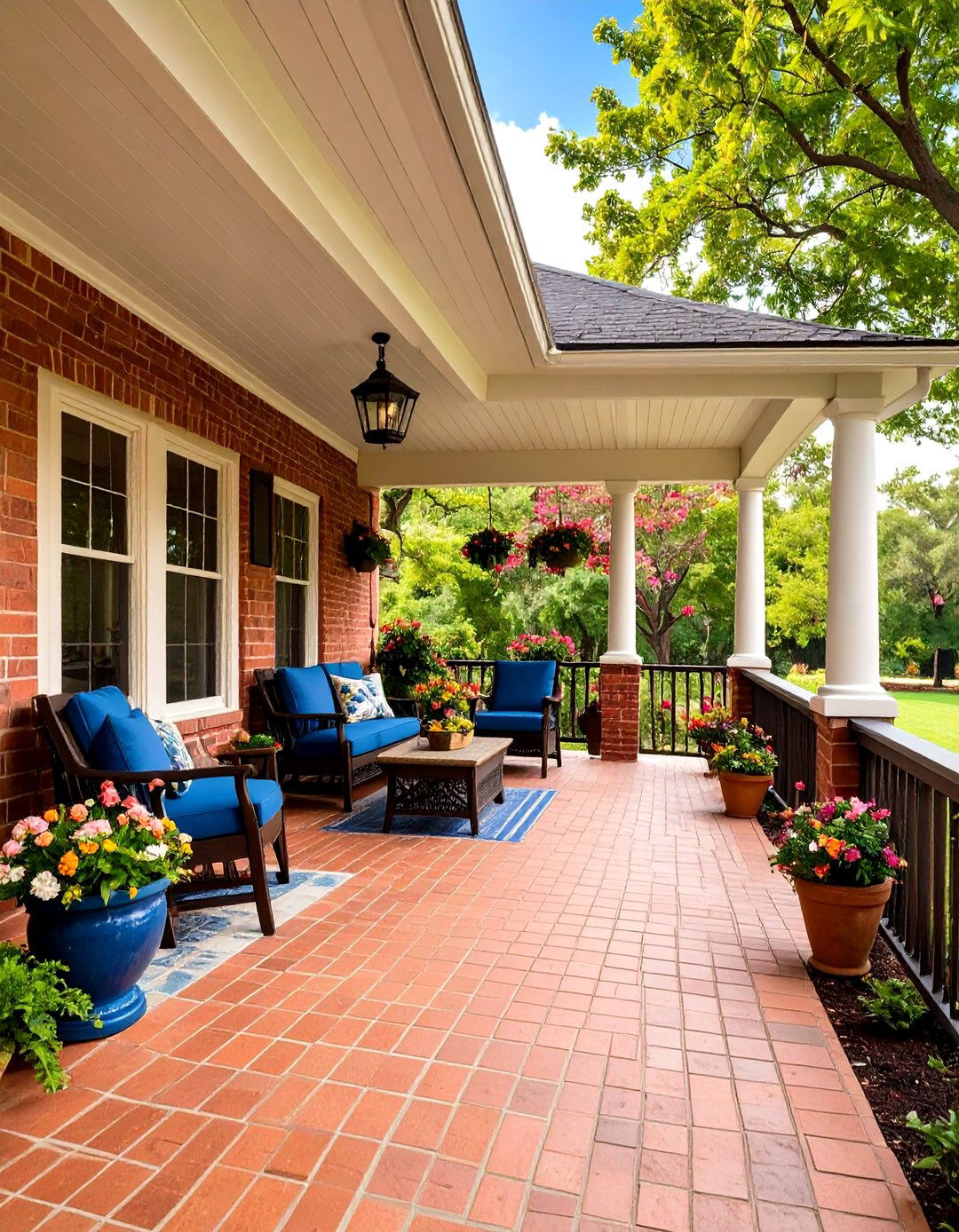
In farmhouse layouts, extending a brick porch around one side of the house multiplies seating zones while shading sun-facing windows. The continuous course allows rocking chairs near the front, a dining nook at the corner, and a quiet hammock stretch down the side. To avoid monotonous symmetry, vary the railing style or column spacing between sections. Ensure the foundation follows grade so water sheds rather than pools at the bend. A wrap-around brick porch not only increases usable square footage but also unites disparate façades into one cohesive outdoor circuit.
14. Brick Porch with Low-Voltage Step Lighting
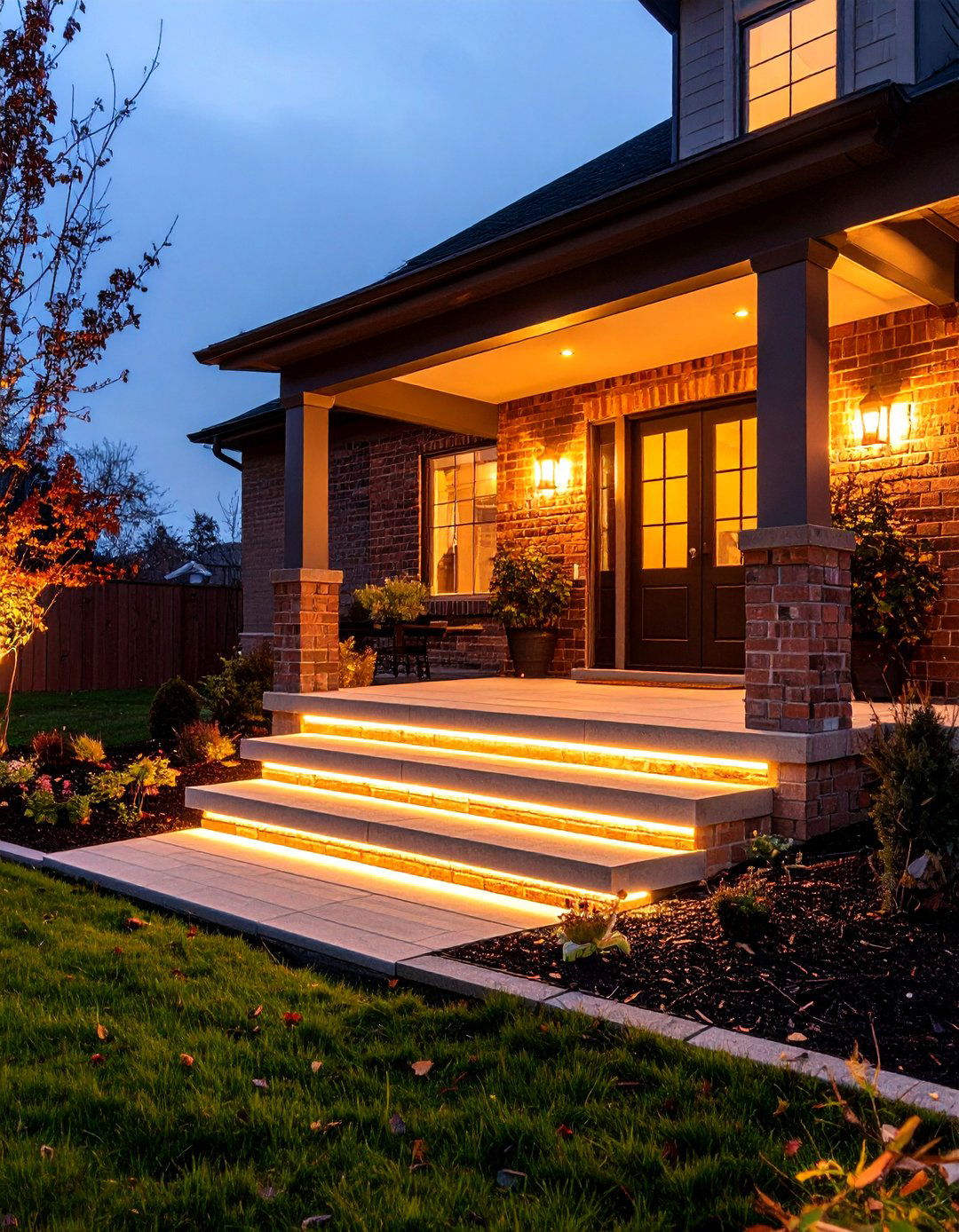
As dusk settles, low-voltage LED strips tucked under each brick porch tread create a gentle glow that guides guests safely while showing off craftsmanship. The slim fixtures fit into routed channels before mortar sets, leaving only light, not hardware, visible. Choose warm-white diodes (2700-3000 K) to complement clay’s red undertones rather than harsh blue. Wiring bundles inside the porch foundation and connects to a photo-cell transformer, so the system switches on automatically at sunset. The effect feels luxurious yet consumes minimal power, proving beauty and safety can share a single circuit.
15. Brick Porch with Stone Tread Accents for Sophisticated Contrast
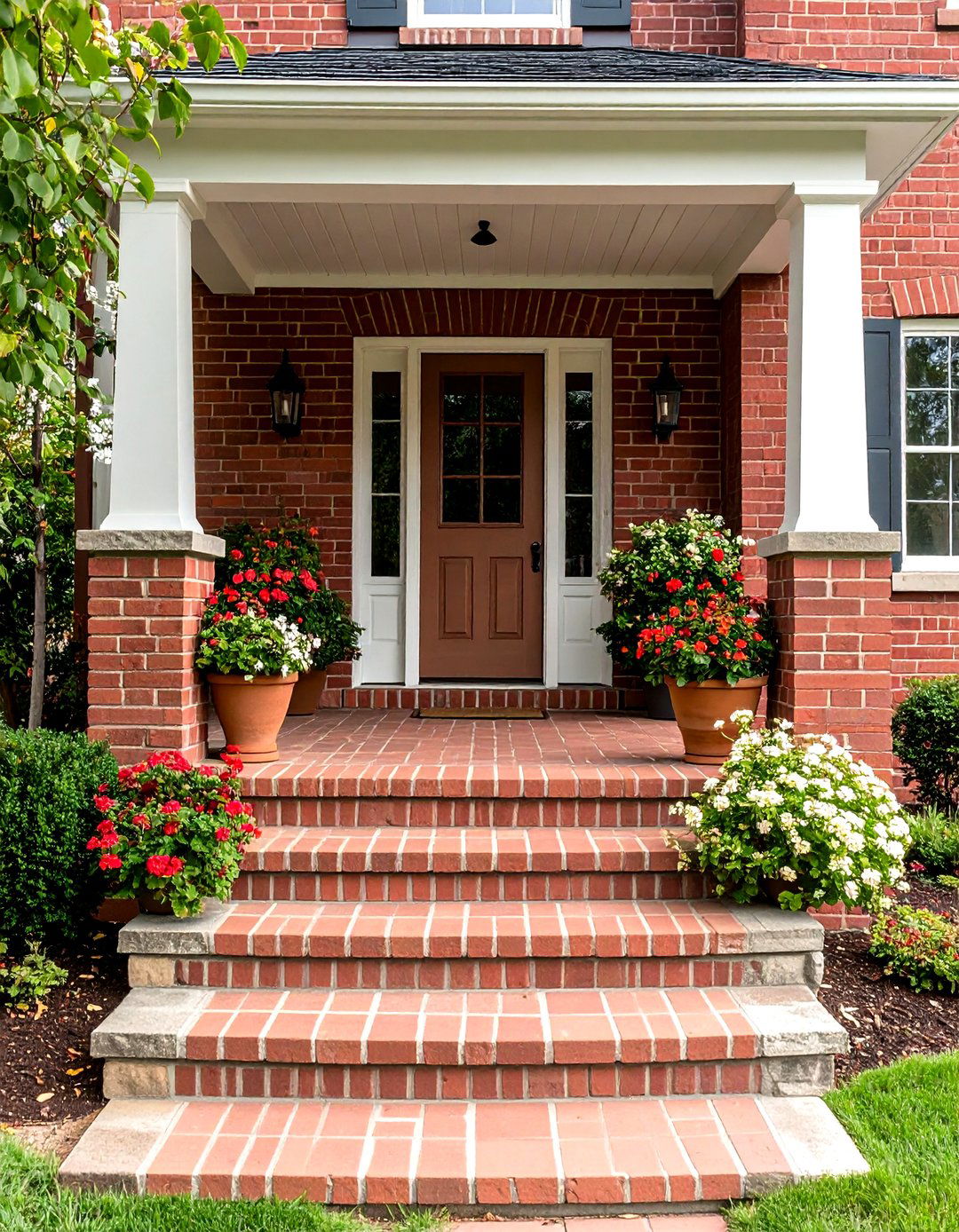
Although brick offers warmth, capping each step with a limestone or bluestone tread elevates the porch to estate-level elegance. The smooth stone edge resists chipping where foot traffic hits hardest, extending the structure’s lifespan. Craftsmen often tool a slight drip groove underneath to keep rain from staining brick risers below. Match the stone thickness to a course of brick so risers remain uniform. The cool gray or creamy ivory creates a sharp line that frames the rich red beneath, proving a brick porch can feel both homey and refined at once.
16. Brick Porch Defined by Bold Black Railings
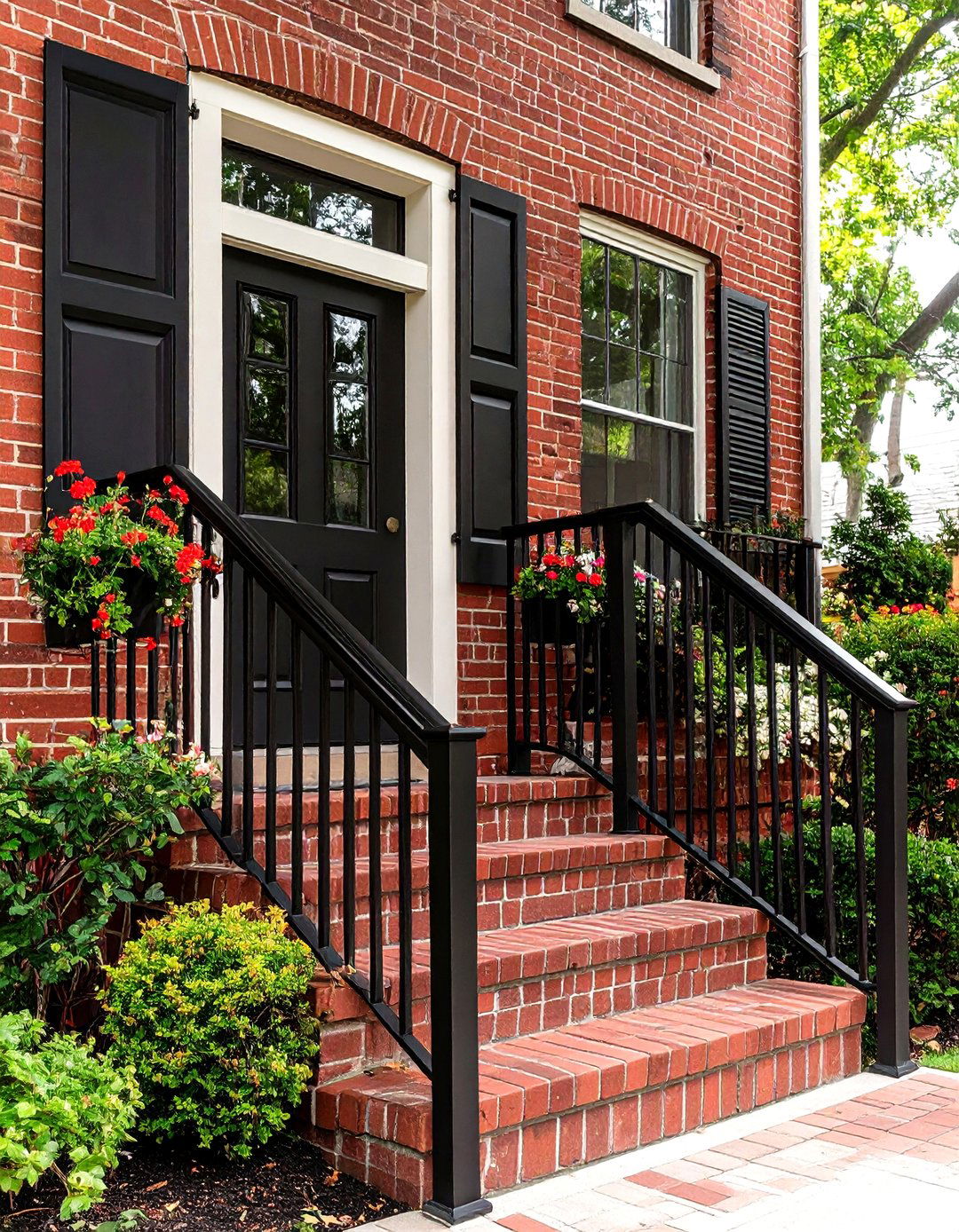
With contemporary architecture trending, swapping delicate spindles for bold matte-black steel railings gives a brick porch instant edge. The dark lines contrast vividly against clay, outlining the entry like graphic ink. Choose square balusters for a minimalist look or horizontal cables if you prefer clearer sightlines. Because steel mounts with posts set into brick, verify flashing seals each penetration to prevent water intrusion. A matching powder-coated handrail on the steps ties the system together. The crisp geometry proves a traditional brick porch can complement modern tastes without sacrificing durability today.
17. Brick Porch with Built-In Bench Seating
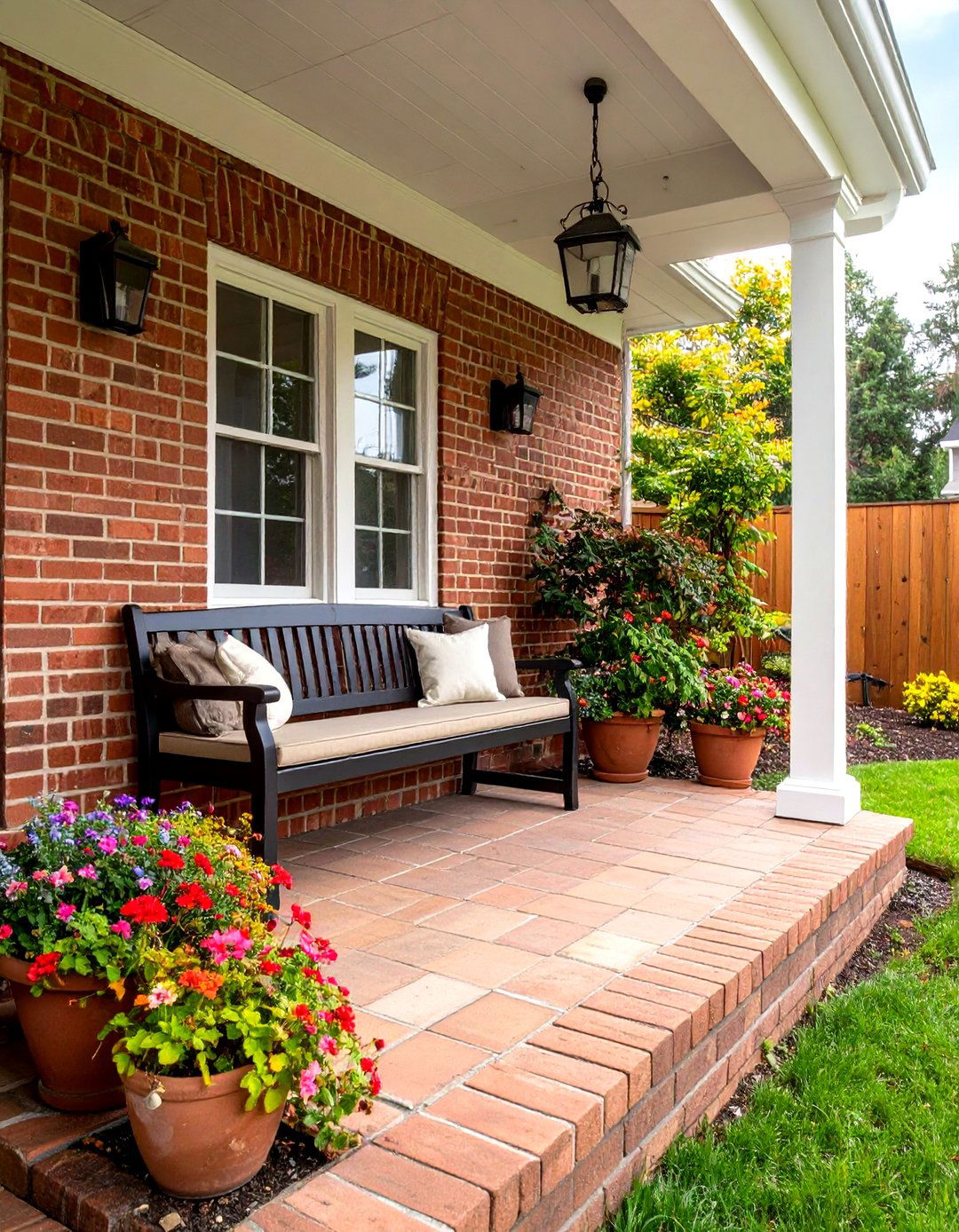
Another clever way to maximize space on a shallow porch is by integrating brick bench seating along one edge. The mason extends the floor upward several courses, caps the top with smooth flagstone, and leaves a hollow core for storage if desired. Cushions covered in marine vinyl soften the seat while echoing interior colors. Because the bench shares the porch foundation, it never wobbles or blows over in storms. Evening chats feel intimate when guests lean back against solid brick that still radiates a gentle warmth captured from the day’s sun.
18. Brick Porch with Wrought-Iron Details
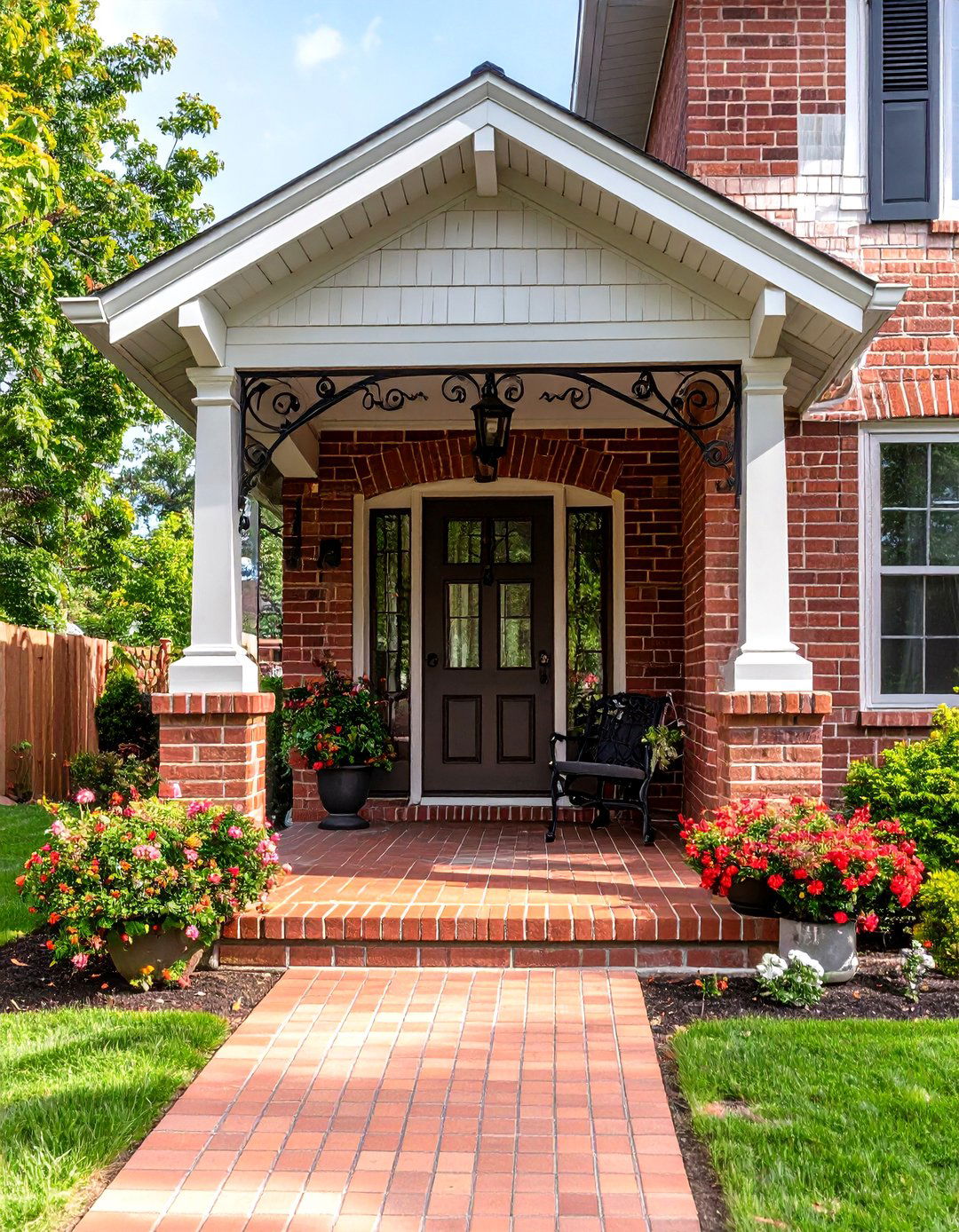
Unlike bulky timber, slender wrought-iron brackets and scrollwork add old-world romance to a brick porch without blocking views. Mount decorative braces under the eaves or as knee braces between columns; the dark metal silhouettes pop against clay and cast delicate shadows at sunset. A matching wrought-iron mailbox or house numbers completes the theme. Because iron can rust, apply a rust-inhibiting primer and high-quality enamel paint every few years. The maintenance is minor compared to the charm earned, giving your brick porch a touch of Parisian balcony elegance day or night.
19. Brick Porch with Statement Front Door Color
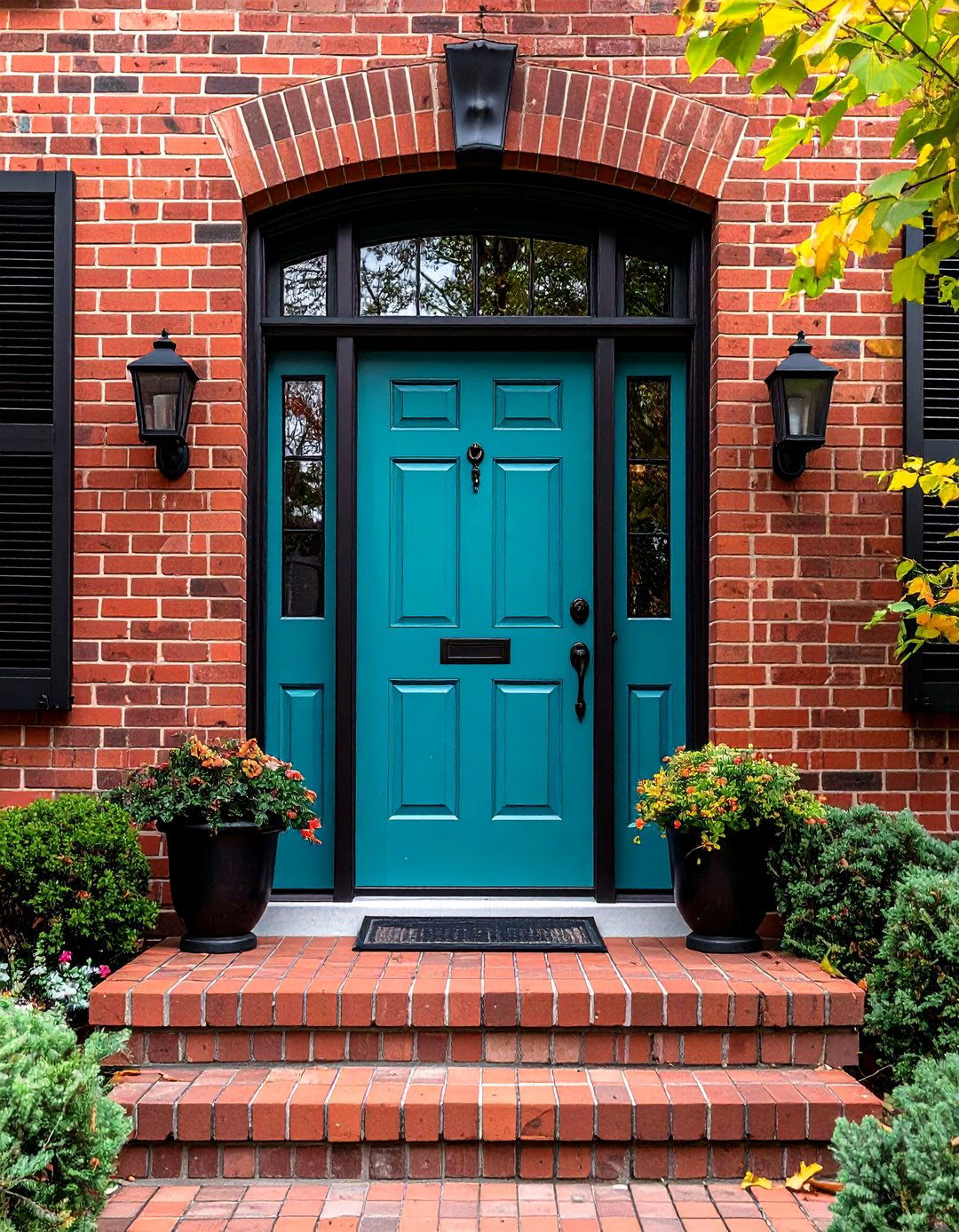
Certainly, a bold front door color can make your brick porch unforgettable with nothing more complex than a paintbrush. Turquoise, chartreuse, or even high-gloss black slices through the sea of red and draws the eye straight to the entrance. Choose a modern emulsion with built-in UV blockers so the hue resists fading under sun and rain. Repeating the door color in porch pillows or a small planter ties the palette together. The fresh coat costs little yet delivers a dose of personality that can be refreshed whenever your tastes evolve.
20. Brick Porch with Raised Garden Beds at the Steps
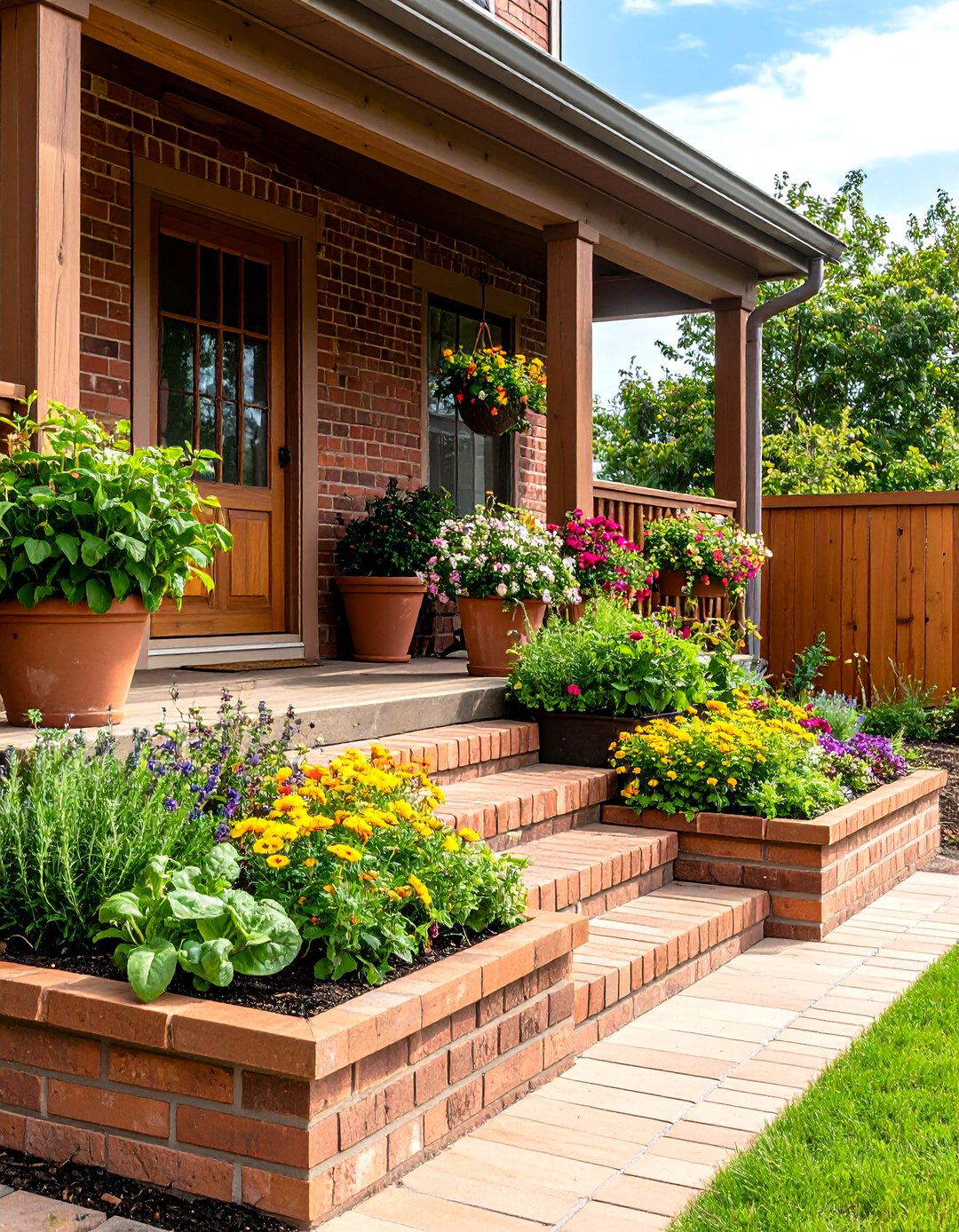
Bees, butterflies, and guests all appreciate a little greenery greeting them, and raised brick beds flanking the steps accomplish just that. By building low retaining walls that double as planters, you connect hardscaping and landscaping into one cohesive threshold. Dedicate one side to aromatic herbs and the other to colorful annuals for seasonal variety. Because the beds sit above grade, drainage and soil quality stay under your control, which keeps plants thriving even if native soil is poor. The living frame makes a brick porch feel alive from the very first step.
21. Running Bond Brick Porch for Modern Simplicity
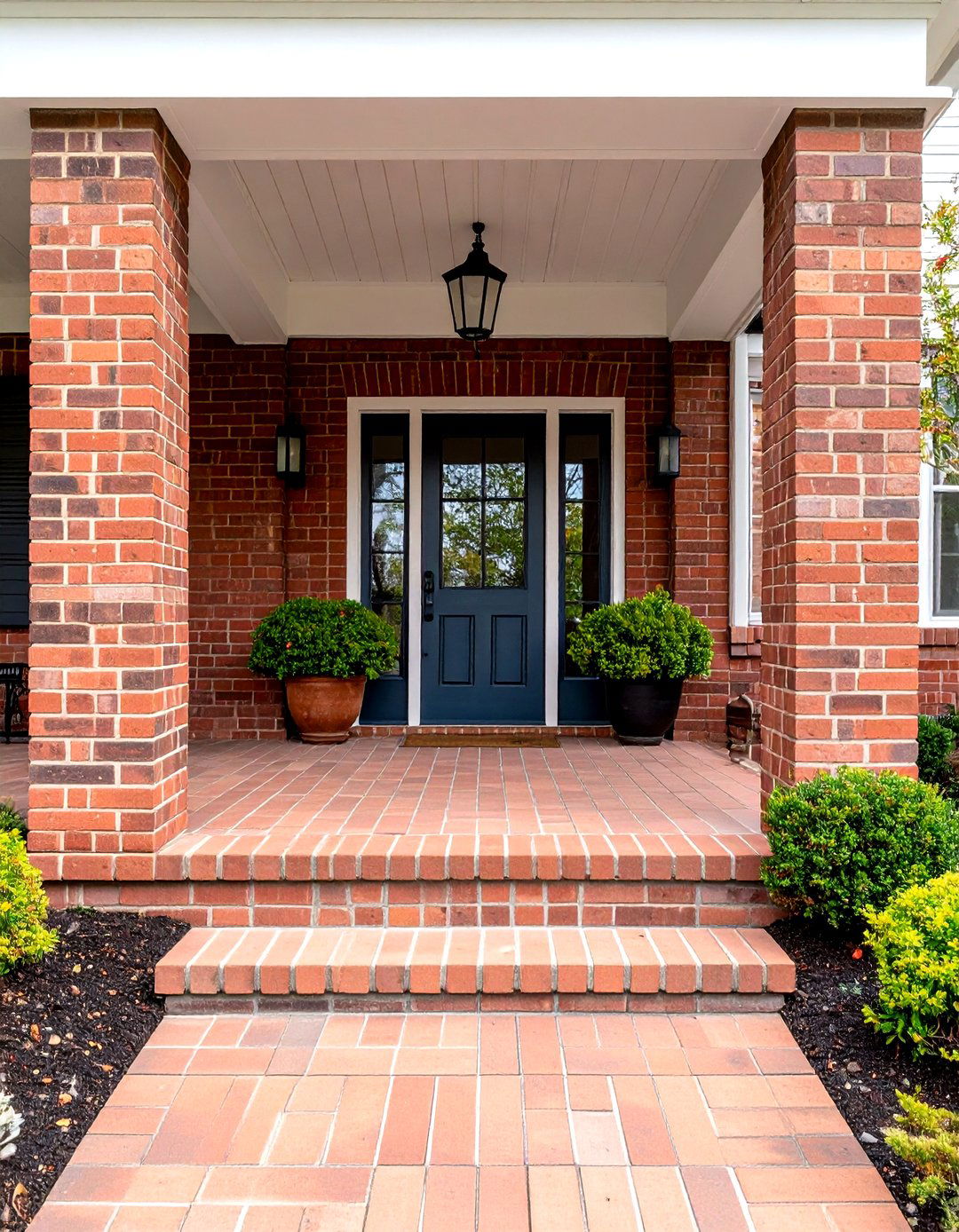
To embrace minimalist design, a straightforward running bond pattern offers the clean, linear rhythm modernists love while respecting brick’s heritage. Bricks lay end-to-end with staggered midpoint joints, producing stable load distribution and rapid installation. Select bricks with tight faces and subtle tonal variation to keep the look sleek rather than rustic. A flush mortar joint — where grout sits level with brick — prevents debris buildup and gives the porch a monolithic feel. The simplicity of a running bond brick porch lets architectural accents, like a cantilevered canopy or sculptural planter, take center stage.
22. Brick Porch Extended into a Matching Pathway
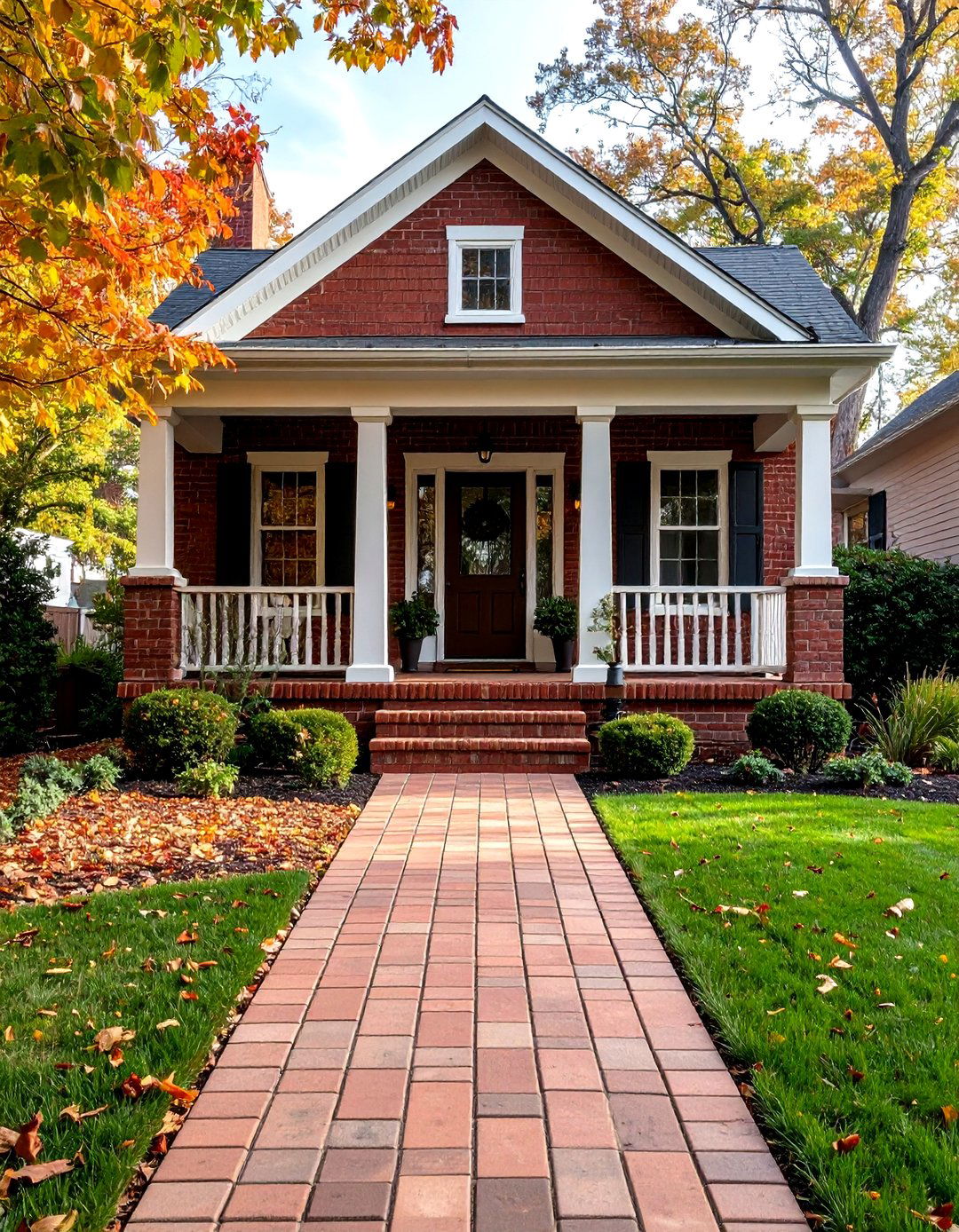
Before guests reach the stoop, a matching brick pathway prepares their eye and prevents material clashes in the landscaping. Laying the walk in the same pattern — but rotated ninety degrees — creates continuity while still signaling progression toward the door. Where the pathway meets the porch, a soldier-course header frames the transition like a picture frame. The practical perk is lower maintenance: a continuous clay surface means a single cleaning routine with no weed lines between mismatched materials. This seamless flow gives a brick porch authority, making it feel like the natural heart of the front yard.
23. Brick Porch Under a Pergola for Filtered Shade
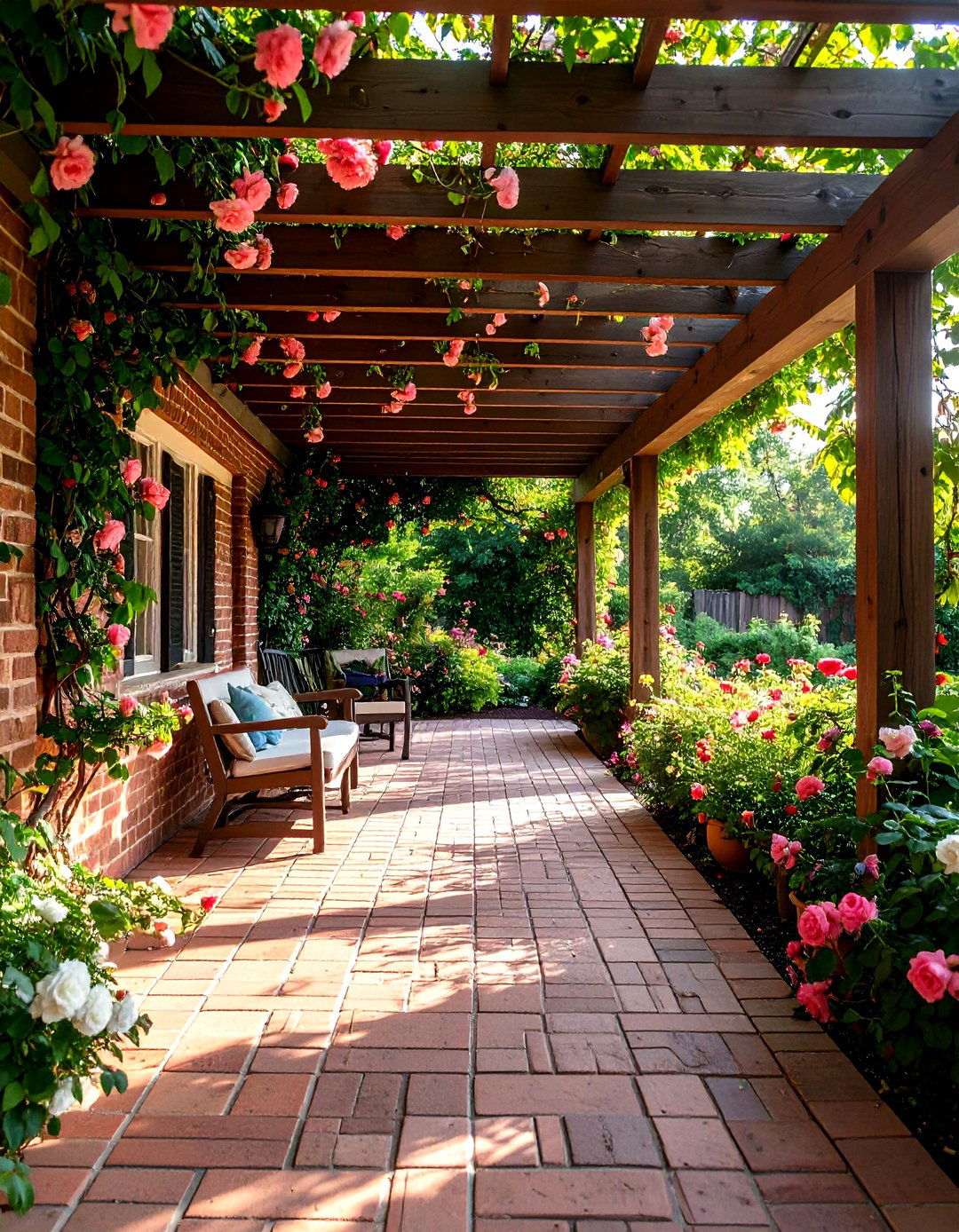
By topping a brick porch with a lightly spaced pergola, you temper harsh sun without darkening interior rooms. The slatted roof casts moving stripes of shade across the clay floor, adding cinematic flair while allowing heat to rise. Use pressure-treated lumber or powder-coated aluminum to resist weather, and secure posts with concealed brackets anchored into the brick footers. Homeowners often train climbing roses or grapes to weave through the rafters, turning the pergola into a living canopy. The filtered light keeps the porch comfortable midday and extends outdoor usability well into summer.
24. Brick Porch Featuring Seasonal Decor Niches

Shortly before the holidays, many homeowners scramble for a safe spot to display lanterns or pumpkins; recessed niches built into the brick porch solve that problem year-round. The mason simply creates shallow cavities in the side walls during construction, each sized for standard décor items. Low-voltage puck lights wired to a switch add drama after dark while protecting flames from wind. In spring, the same niches cradle potted bulbs; in summer, vintage watering cans. Permanent recesses free up floor space and keep decorations tidy, ensuring the brick porch stays functional no matter the season.
25. Brick Porch with Patterned Tile Inlay
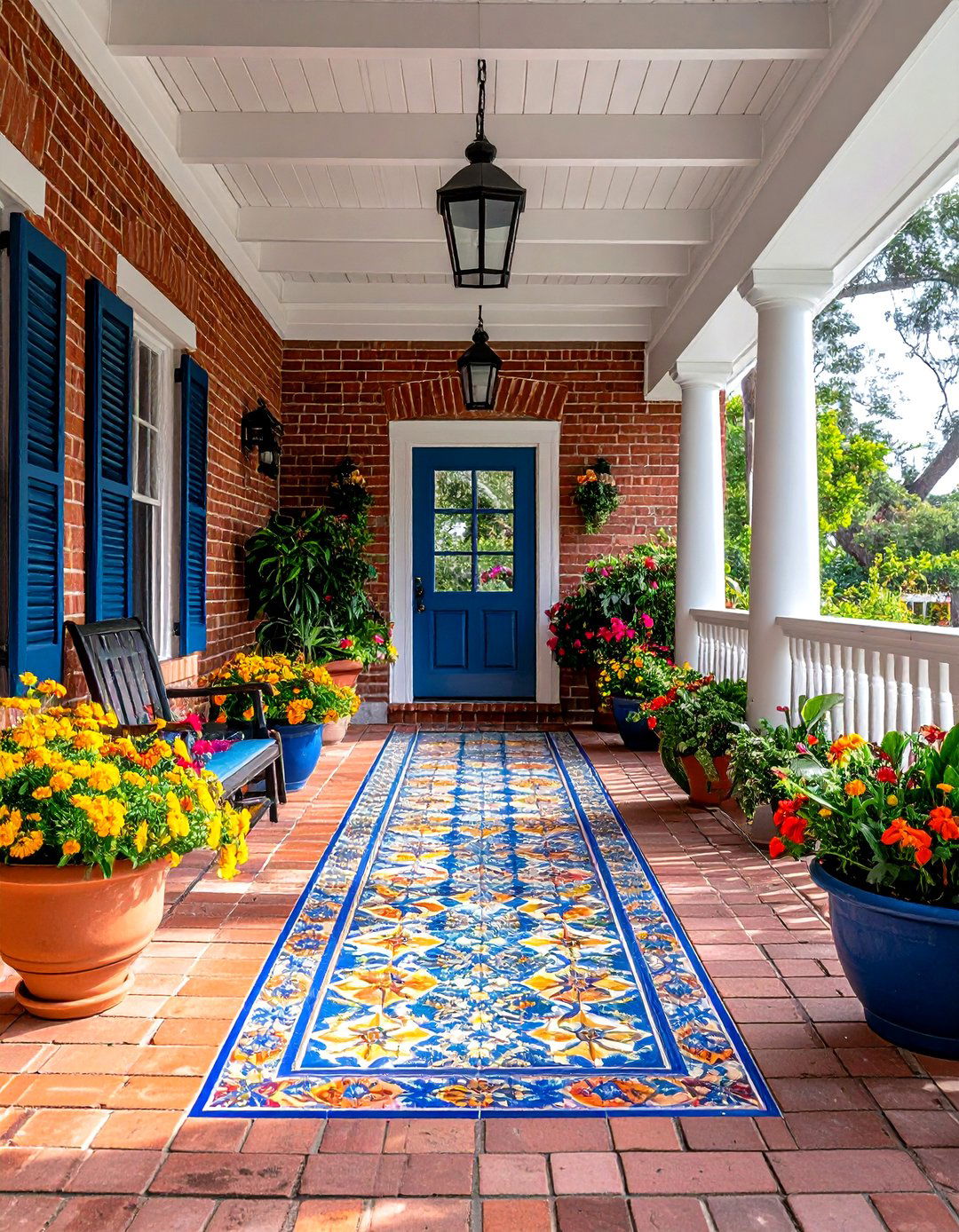
Finally, if you crave color but want to keep the strength of brick, consider a patterned cement-tile inlay set like a carpet in the middle of the porch. Masons leave a rectangular void while laying bricks, then fit tiles on a waterproof membrane and grout flush. Choose motifs that echo your interior floors to create a sense of continuity through the threshold. Because tiles may be less frost-resistant, limit the inlay to a covered area or apply a penetrating sealer yearly. The hybrid floor turns a classic brick porch into a one-of-a-kind gallery.
Conclusion:
Brick may be one of humanity’s oldest building materials, yet its versatility on a porch remains fresh and endlessly adaptable. From time-tested herringbone floors to tech-savvy LED step lights, each idea above shows how texture, color, and clever carpentry can tailor fired clay to almost any taste. Whether you lean rustic with timber beams or contemporary with cable railings, a thoughtfully detailed brick porch returns every ounce of curb appeal and daily enjoyment. Let these concepts spark your creativity, then shape the threshold that welcomes you home with strength and style.


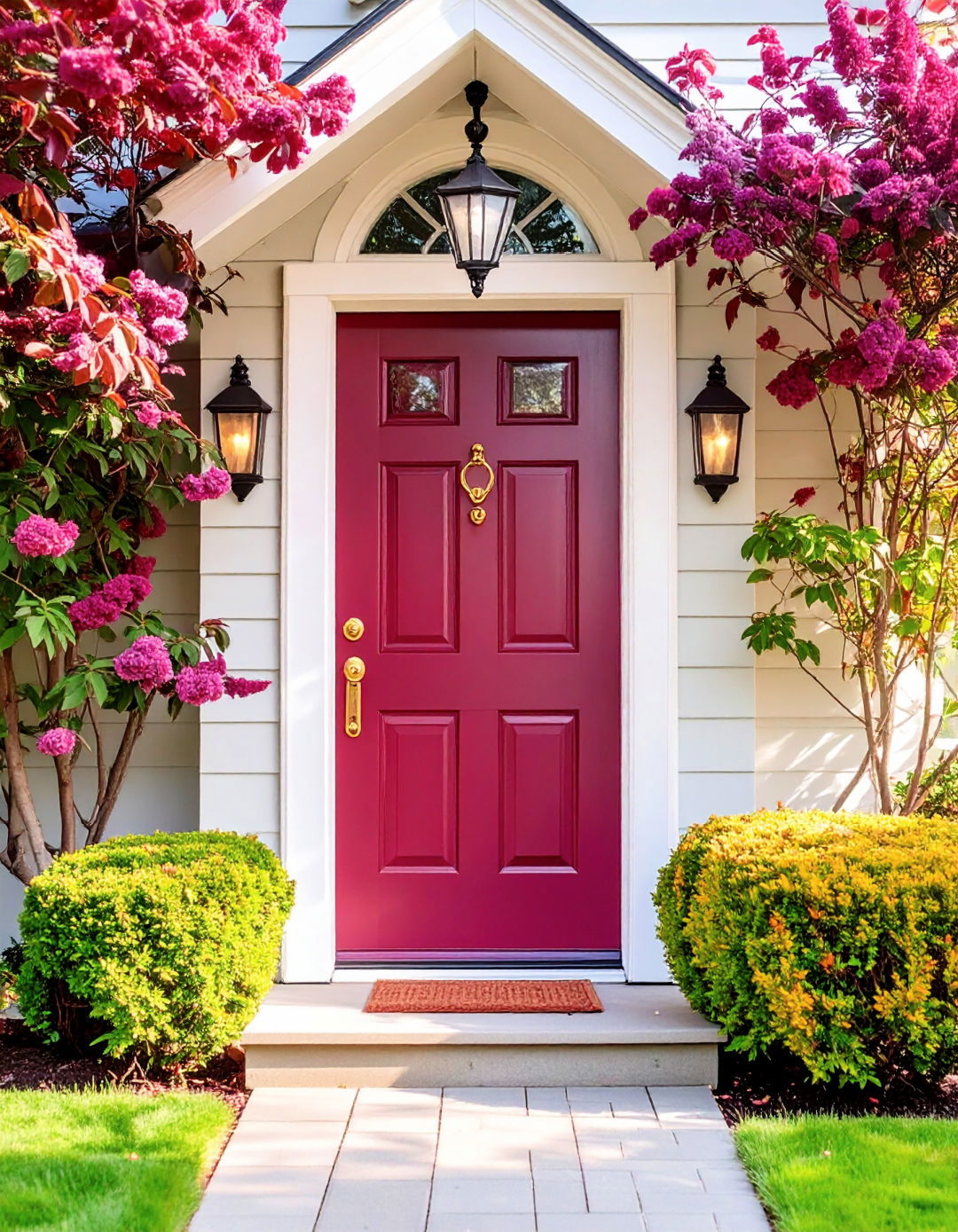

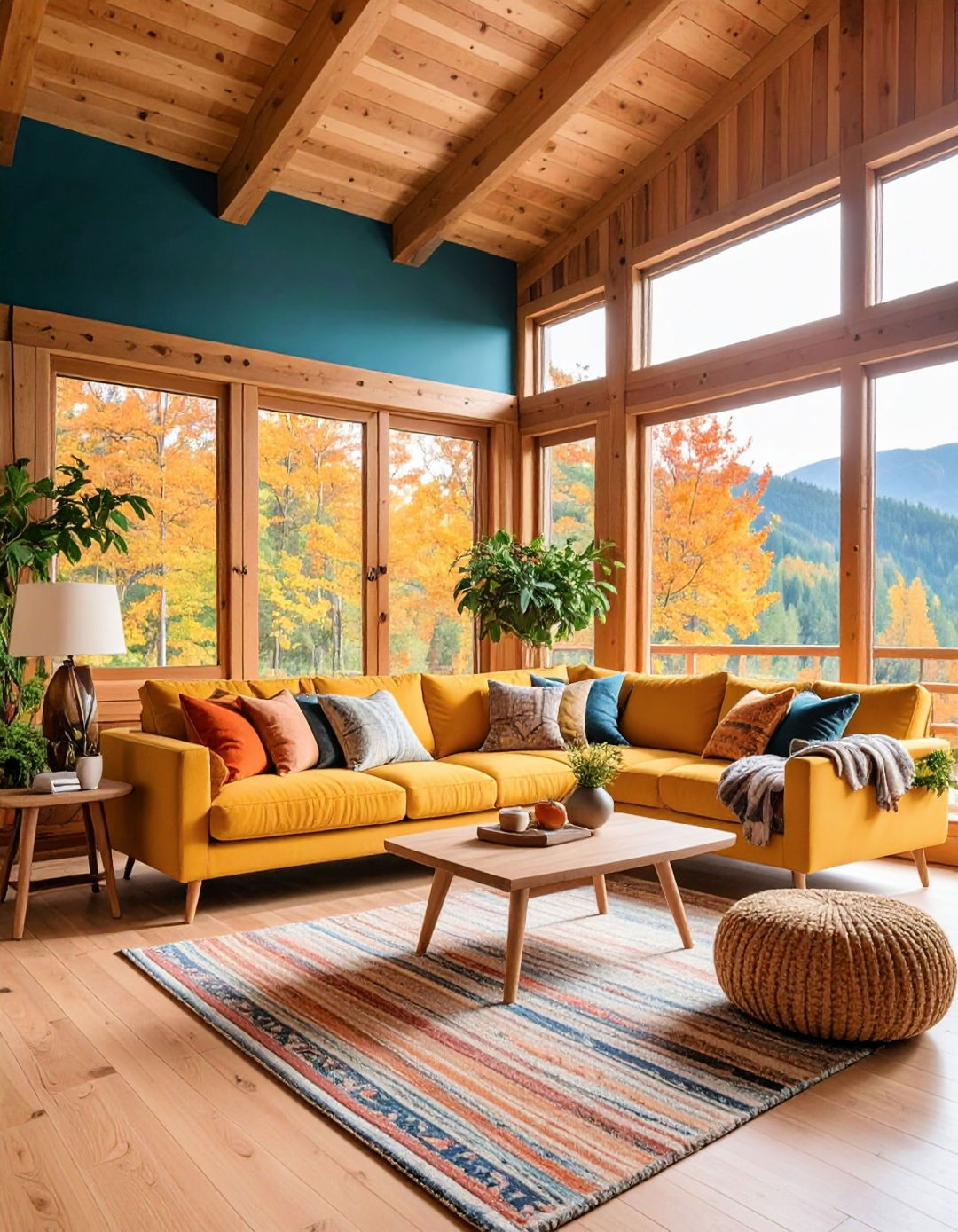
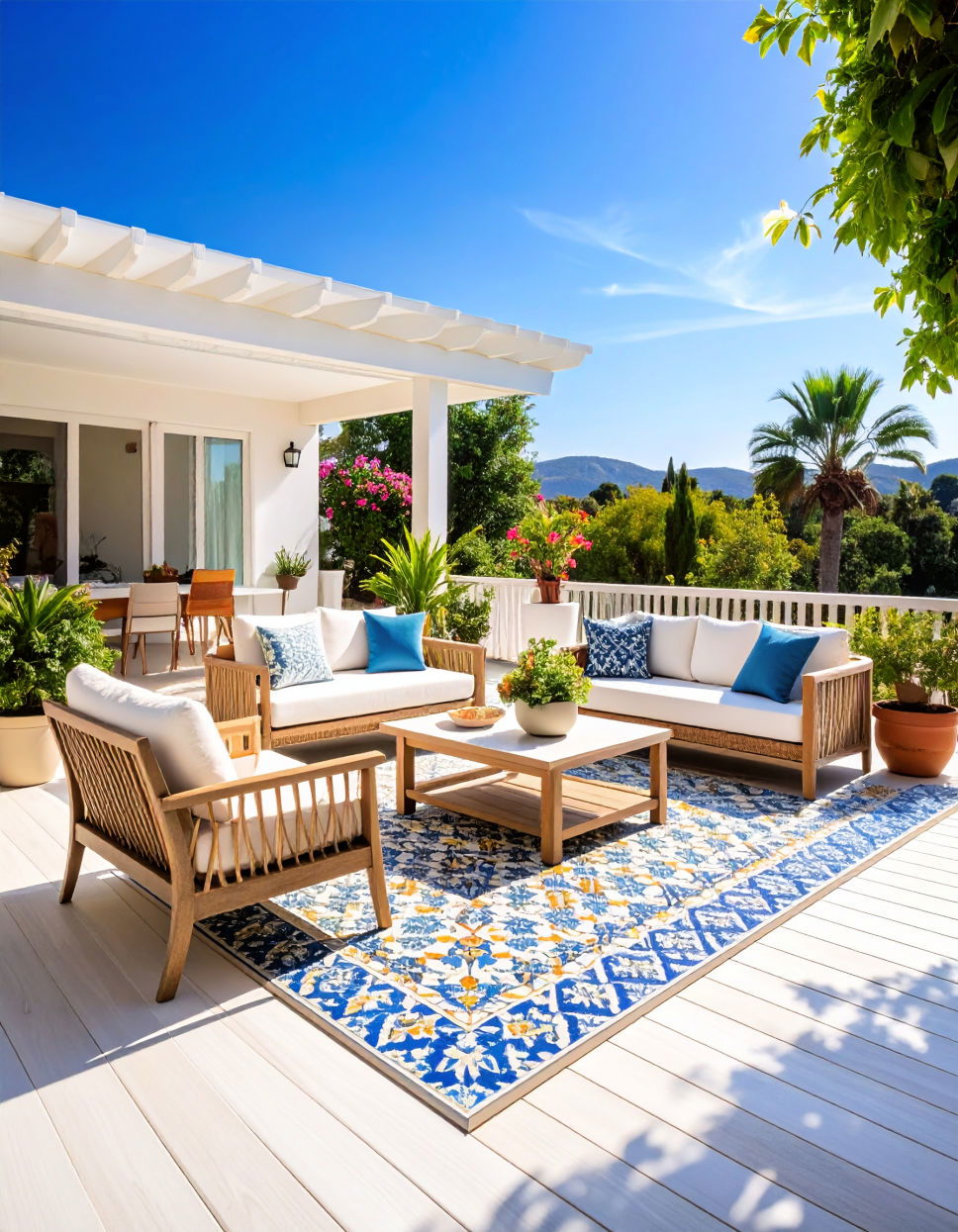
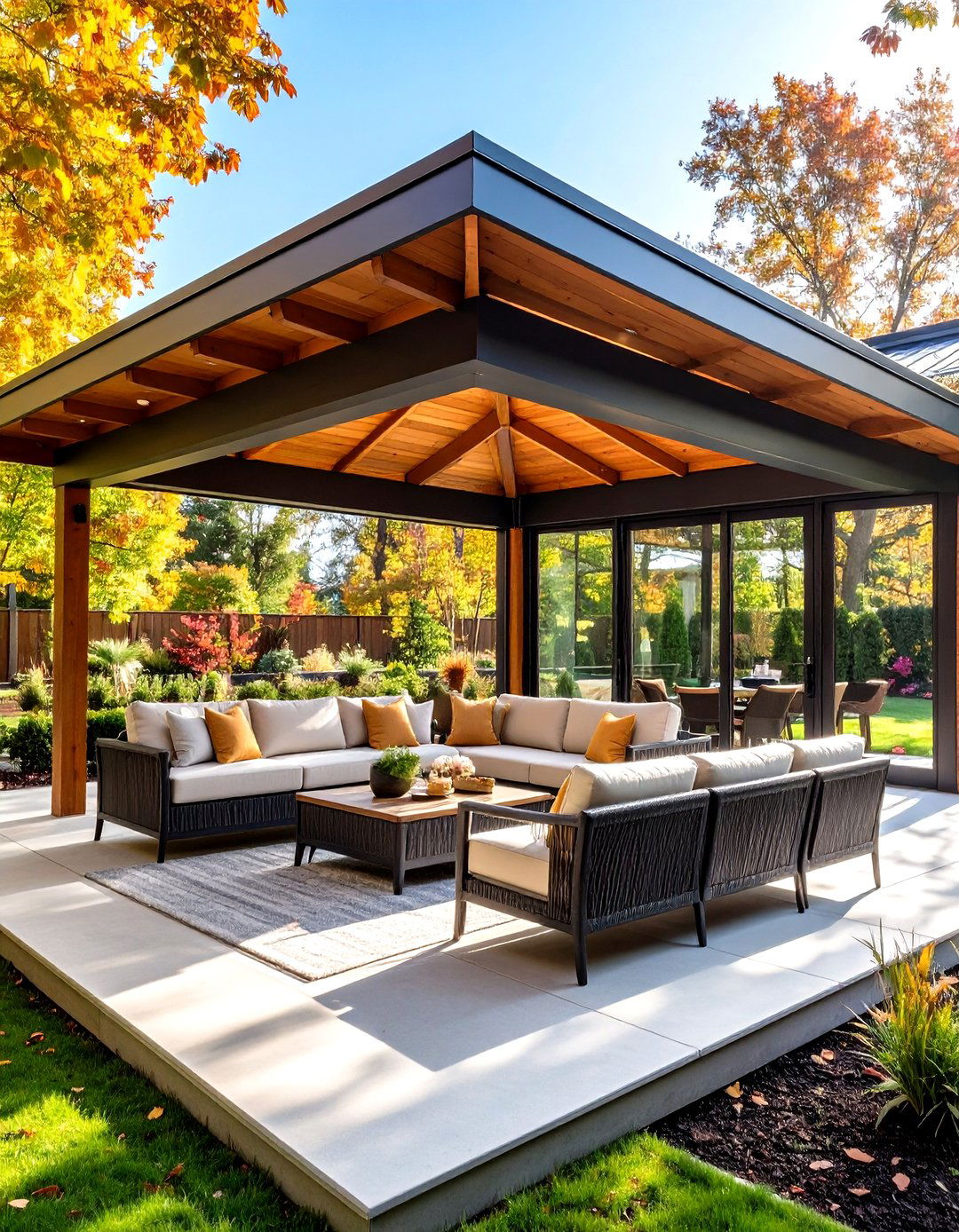
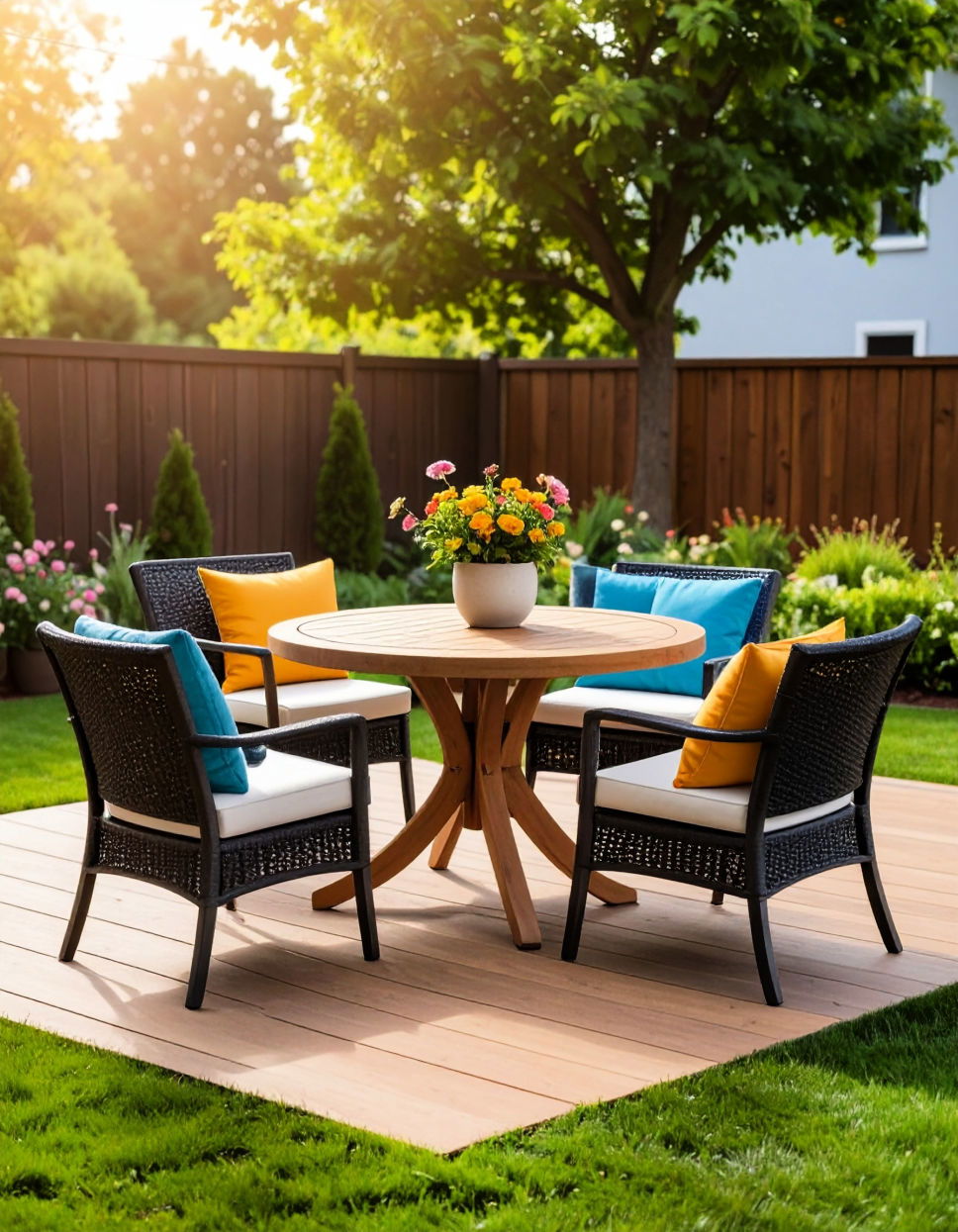
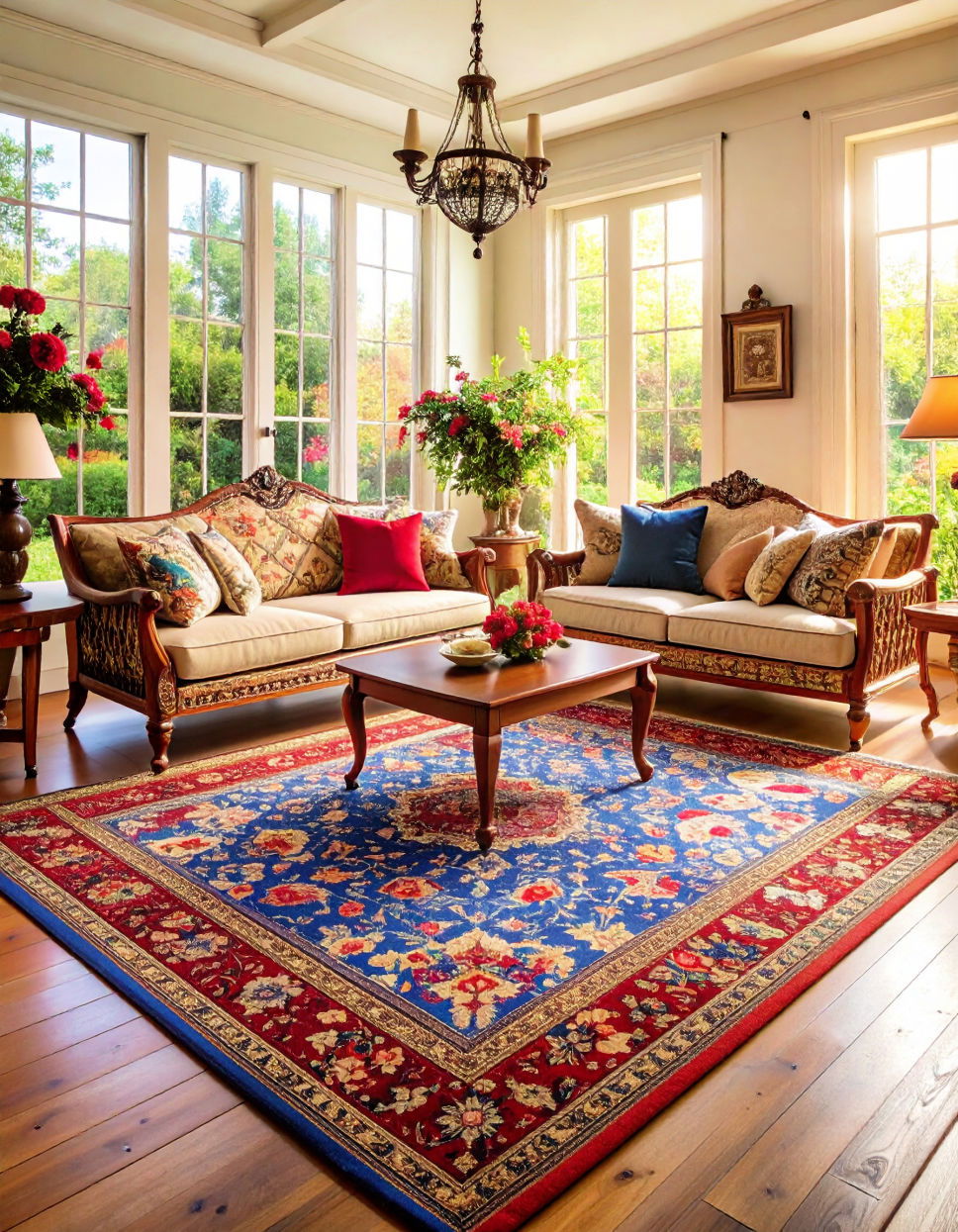
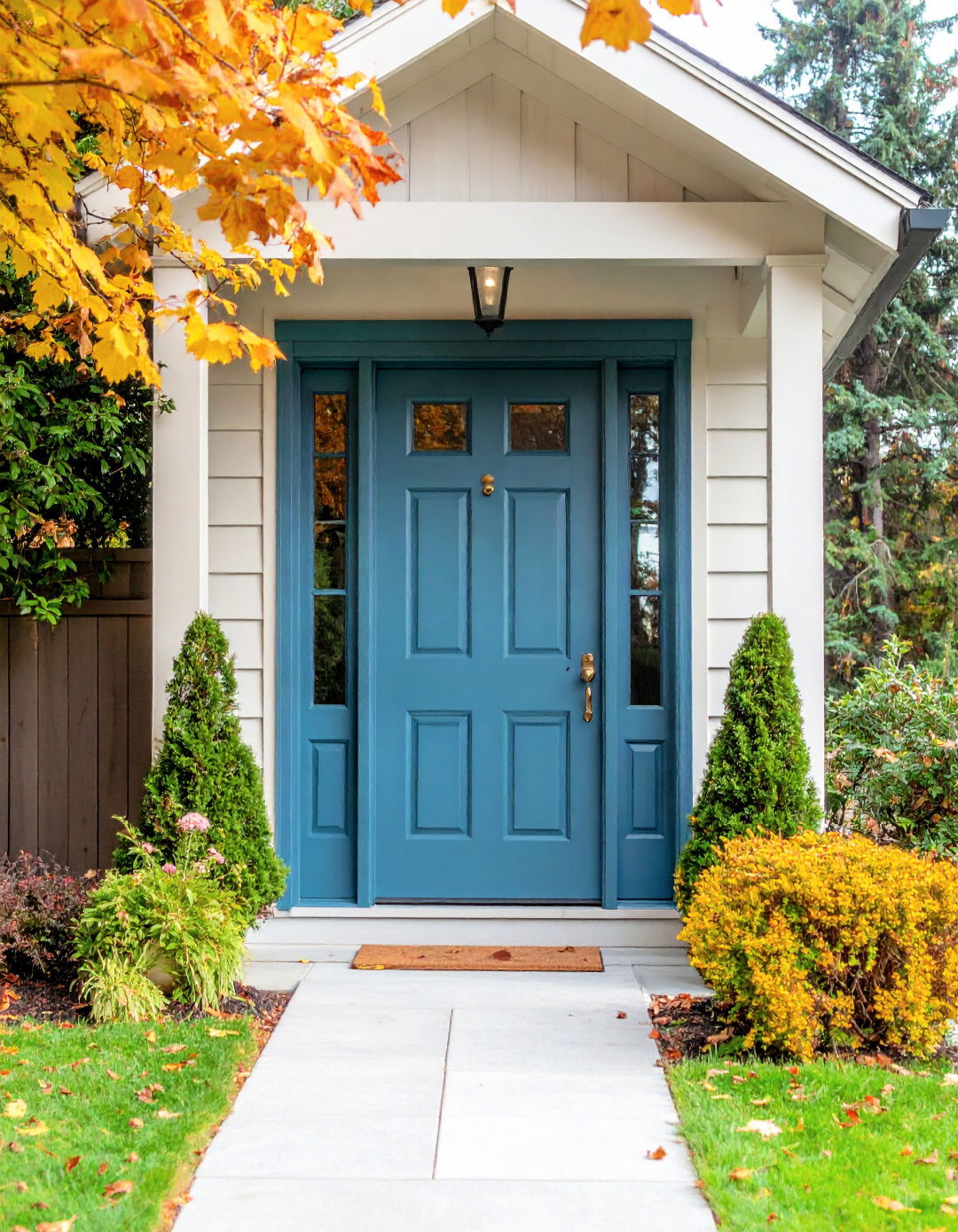
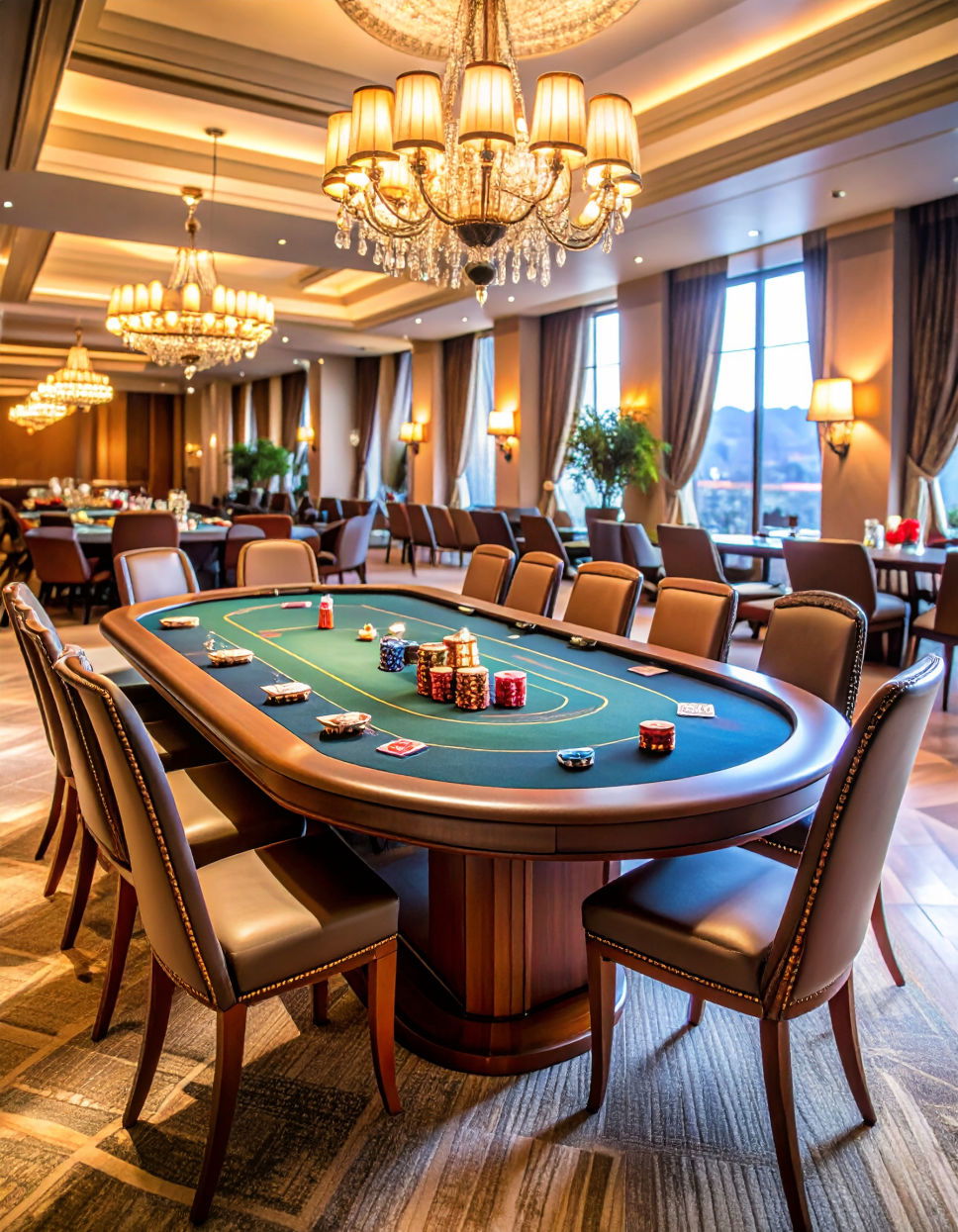
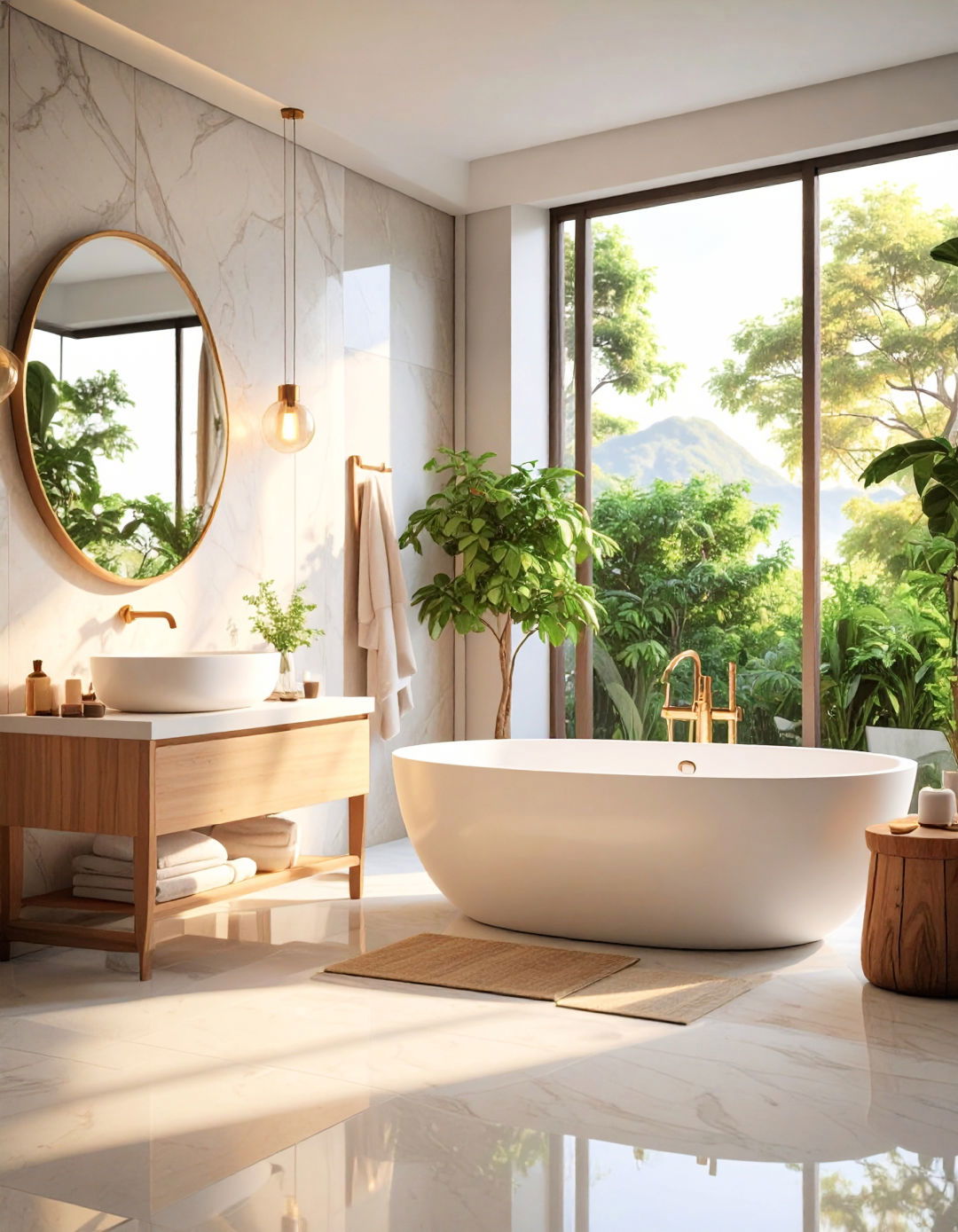
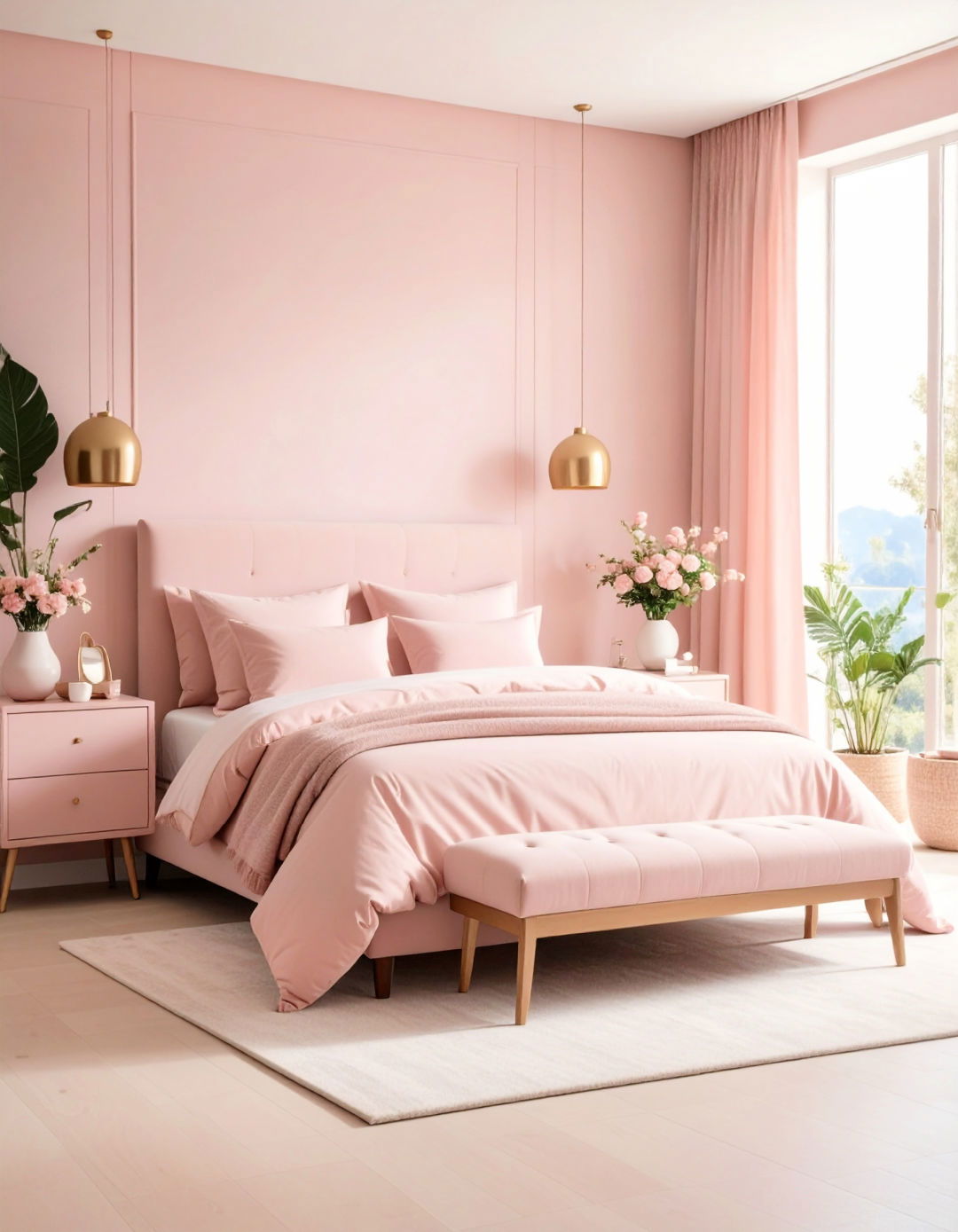


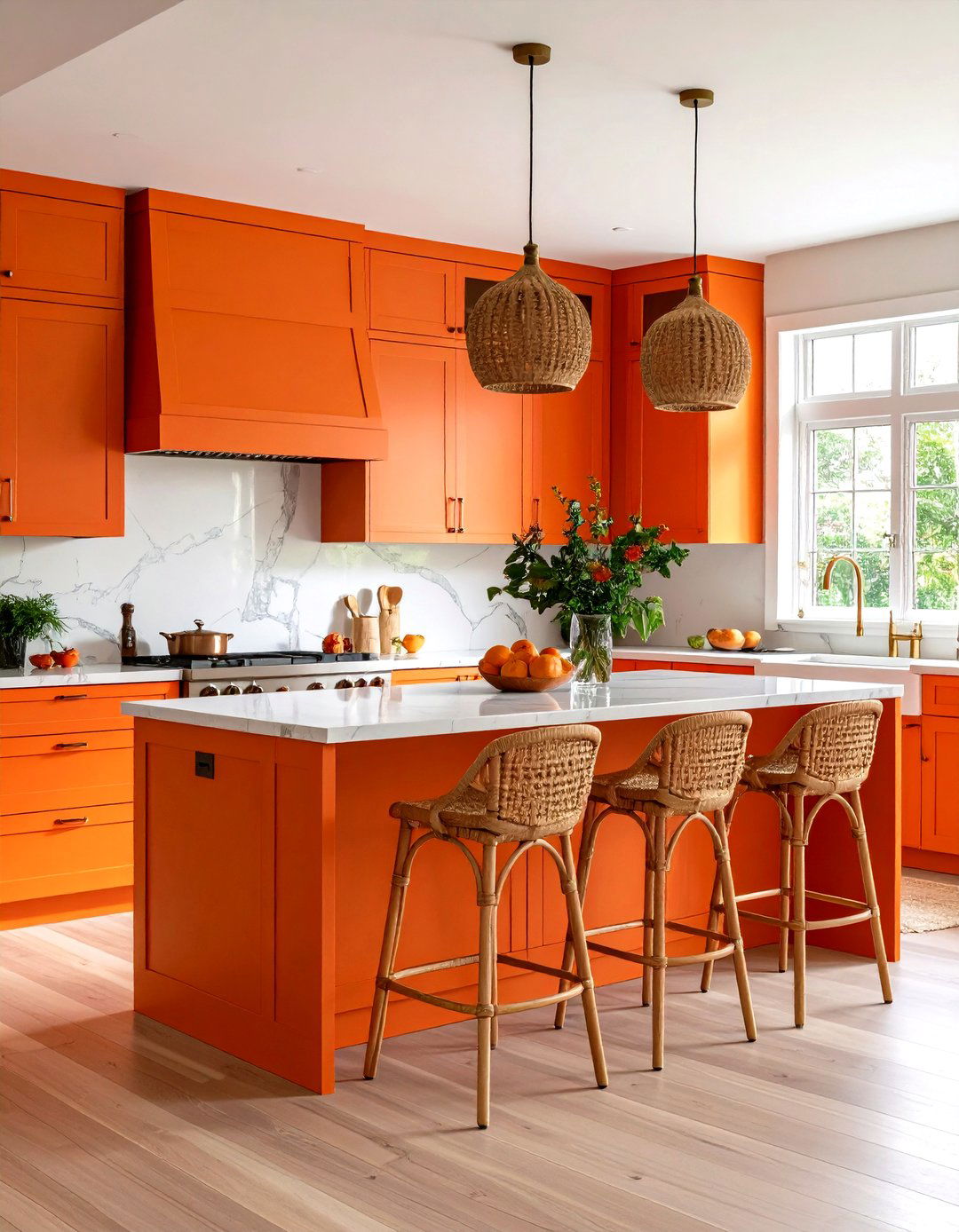
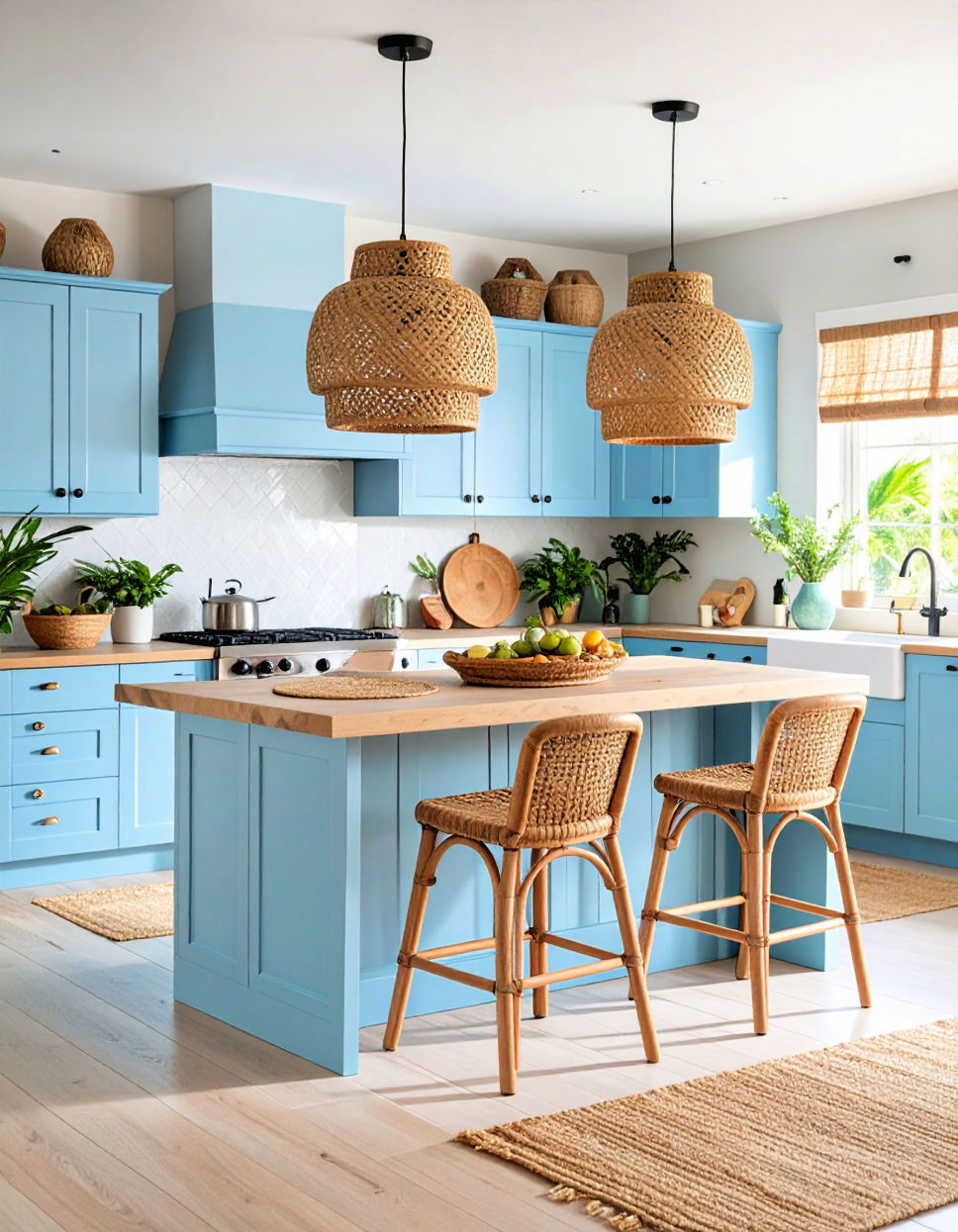
Leave a Reply